Overview of Methods for Enhanced Oil Recovery from Conventional and Unconventional Reservoirs
Abstract
1. Introduction
- Production of oil with a low carbon footprint. Reduction of CO2 emissions using CO2 capture technologies, which is one of the highest priorities of the modern global climate agenda;
- Development of new technologies in demand. Since technology capture and storage of CO2 only develop, oil and gas companies have a huge competitive advantage in this niche because they have on hand as a source of CO2 emissions and collectors, which can pump this CO2. That is, in fact, oil companies can create a new niche for themselves in the market.
- Formation;
- Lithologically confined;
- Hydrodynamically open;
- Catagenetic;
- Massive;
- 5.1.
- Carbonate massifs;
- 5.2.
- Terrigenous strata-massive.
- To expand the conceptual and categorical apparatus related to the predictive evaluation of the results of measures to increase oil recovery and to form a comprehensive methodological approach to the planning of these activities;
- To propose the use of combined activities to enhance oil recovery, maximizing the volume of additional oil production.
2. Conventional and Unconventional Reservoirs
3. Enhanced Oil Recovery Methods Used for Intensification of Oil Production
3.1. Structure and Main Destination of Methods for Enhanced Oil Recovery (EOR)
- Physical and chemical methods involve flooding with the use of active impurities (surfactants, polymers, alkalis, sulfuric acid, carbon dioxide, and micellar solutions);
- Hydrodynamic methods allow intensifying the current oil production, increasing the degree of oil recovery, as well as reducing the volume of water pumped through the reservoirs and the current water cut of the produced fluid. For example, there is cyclic flooding, changing the direction of seepage flows, and forced fluid withdrawal;
- Gas and water–gas methods are based on the injection of air into the reservoir and its transformation into effective displacing agents due to low-temperature in situ oxidation processes. As a result of low-temperature oxidation, a highly effective gas agent is produced directly in the reservoir, containing nitrogen, carbon dioxide and NGLs (broad fractions of light hydrocarbons). For example, these are water–gas cyclic impact and displacement of oil by high-pressure gas;
- Thermal methods are used to stimulate the flow of oil and increase the productivity of production wells based on an artificial increase in temperature in their wellbore and bottom hole zone. Thermal EOR is used mainly in the production of high-viscosity paraffinic and resinous oils. Heating leads to oil liquefaction, melting the paraffin and resinous substances that have settled during the operation of wells on the walls, lifting pipes and in the bottom hole zone. For example, they include steam-cycling treatment, in situ combustion, use of water as a thermal solvent for oil;
- Combined technologies represent a combination of the first four components.
- physico-chemical methods using aqueous solutions: active impurities (surfactants (surfactants), polymers, micellar solutions, alkalis, acids), change or alignment of injectivity profiles (VPP);
- hydrodynamic methods, including cyclic flooding, changing the direction of filtration flows, creating high injection pressures, forced fluid withdrawal (FOL), combined non-stationary flooding;
- gas methods realizing the displacement of oil by high-pressure gas, water–gas treatment;
- thermal methods using the displacement of oil by heat carriers (hot water, steam), in situ combustion;
- other methods involve compaction of the good pattern, transition from one development system to another (local, selective flooding, creation of a block-closed system), hydraulic fracturing (HF), placement and operation of side and horizontal wells, microbiological, wave, and electromagnetic methods.
- reduction of interfacial tension at the boundary of the oil-displacing agent;
- decrease in the mobility ratio of the displaced and displacing fluids (due to a decrease in oil viscosity or a decrease in the mobility of the displacing agent);
- redistribution of oil, water and gas in the reservoir in order to consolidate oil reserves.
3.1.1. Forms of Existence of Residual Oil in the Reservoir
- Oil remaining in low-permeability interlayers (interlayers) and areas not covered by water is 27%;
- Oil in stagnant zones of homogeneous reservoirs is 19%;
- Oil remaining in lenses and at impenetrable screens not penetrated by wells is 24%;
- Capillary-retained and film oil is 30%.
3.1.2. Reasons for the Existence of Residual Oil in the Reservoir
3.1.3. Conditions for the Effective Use of EOR
4. Physical and Chemical Methods of Enhanced Oil Recovery
4.1. Displacement of Oil by Aqueous Solutions of Surface-Active Substances (Surfactants)
4.2. Surfactant Adsorption
4.3. Surfactant Compositions
4.4. Displacement of Oil from the Reservoir by Polymer Solutions
4.5. Micellar-Polymer Flooding Method
4.6. Change or Alignment of the Injectivity Profile (RWY)
4.7. Selection of Sites and Wells for the Application of Technology for Increasing the Injectivity Profile
- The presence of a pronounced geological filtration heterogeneity of the reservoir section (a prerequisite for the advanced development of reserves in individual interlayers). First of all, areas with the most pronounced heterogeneity are processed.
- Correspondence of the degree of recovery of oil reserves to the water cut of the products: the lower the correspondence, the need for work is dictated first (this indicates the presence of pinched residual recoverable reserves).
- The ratio of the degree of pumping (as a percentage of the pore volume of the site) and the selection from the NIH (the efficiency of the RPM system). The larger this ratio, the lower the current efficiency of the reservoir pressure-maintenance system and the more volumes of water are injected and extracted without doing useful work on the frontal oil displacement. This fact also indicates the relative value of artificially pinched residual recoverable reserves. Therefore, first of all, attention should be paid to areas that have the highest ratio of pumping and selection from NIH.
- Ceteris paribus, the sections of the production facility corresponding to the Kazemi model are processed first. That is, they have high and low permeability interlayers.
- Under conditions of a homogeneous geological structure, for example, in monolithic deposits, the permeabilities determined for production and injection wells are compared, respectively, according to pressure build-up and efficiency.
4.8. Hydrodynamic Methods for Enhanced Oil Recovery
4.8.1. Changing the Direction of Filtration Flows
4.8.2. Forced Liquid Withdrawal (FOL)
- Water cut of products of not less than 90–95% (beginning of the final stage of development);
- High well productivity factors at the beginning of the operation;
- when the bottom hole pressure decreases, the reservoir is stable (does not collapse), and the discharge pressure should not exceed the tensile strength of the rock;
- The casing is in good condition; there are no water flows from other horizons;
- The throughput of the system for collecting and preparing products is sufficient for the use of FOL.
4.8.3. Cyclic Flooding
- The presence of layered heterogeneous permeability or fractured porous hydrophilic reservoirs;
- High residual oil saturation of low-permeability interlayers;
- The technical and technological possibility of creating a high amplitude of pressure fluctuations (flow rates), which can reach 0.5–0.7 of the average pressure drop between injection and production wells (average flow rate).
4.8.4. Combined Non-Stationary Flooding
5. Gas and Water–Gas EOR
5.1. Displacement of Oil from the Reservoir by Carbon Dioxide (CO2)
5.2. Displacement of Oil by Hydrocarbon Gases
5.3. Water–Gas Cyclic Impact
6. Thermal Methods of Enhanced Oil Recovery
6.1. Physical Processes Occurring When Oil Is Displaced by Heat Carriers
6.2. Displacement of Oil from the Reservoir by Hot Water and Steam
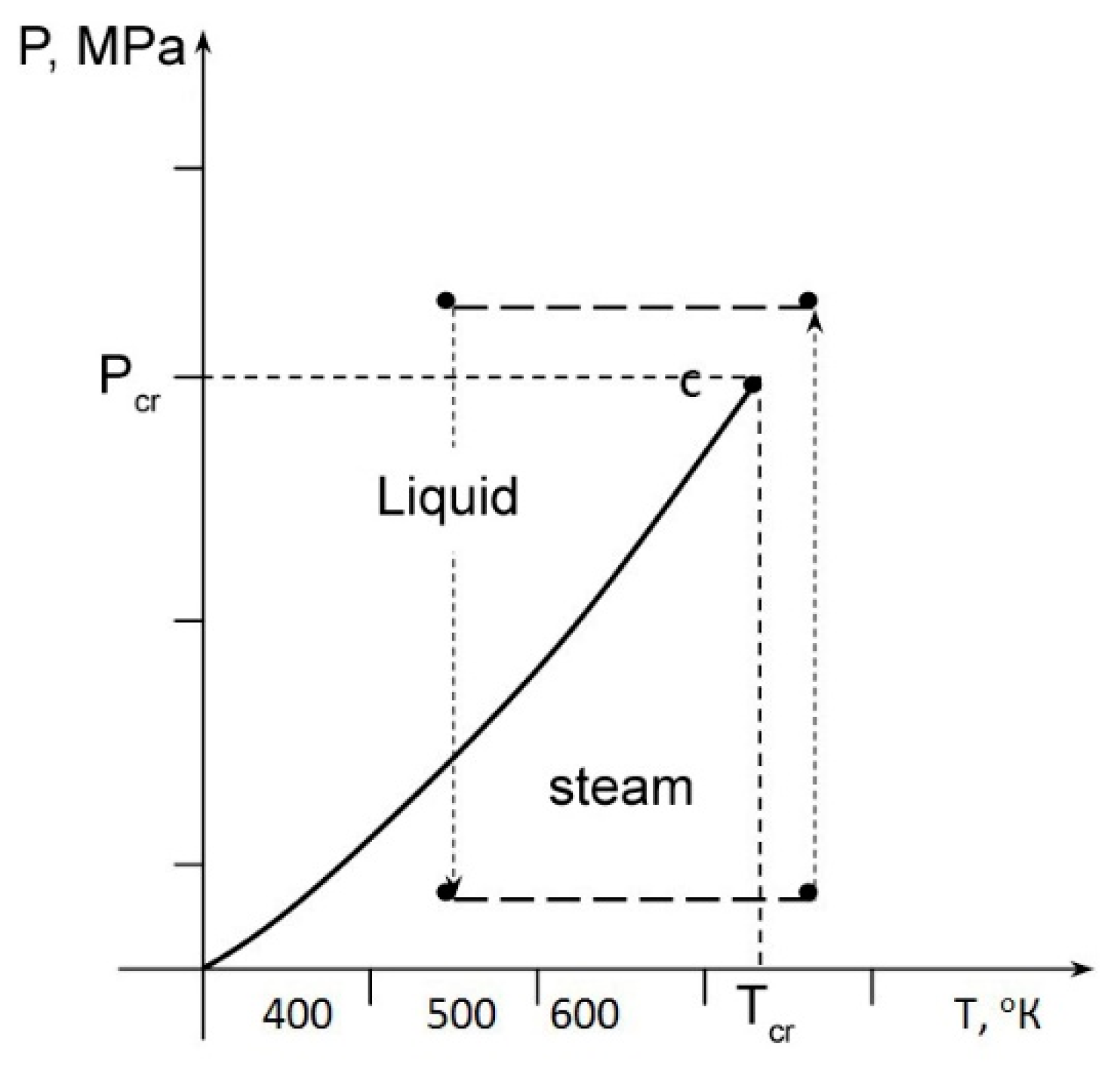
6.3. Thermal Rim Method
7. Combined Technologies for Enhanced Oil Recovery in Deposits with High-Viscosity Oils
7.1. Thermopolymer Formation Stimulation (TPV)
7.2. Steam-Cycling Treatment of Production Wells
7.3. In Situ Combustion
7.4. Dry In Situ Combustion
7.5. Wet In Situ Combustion
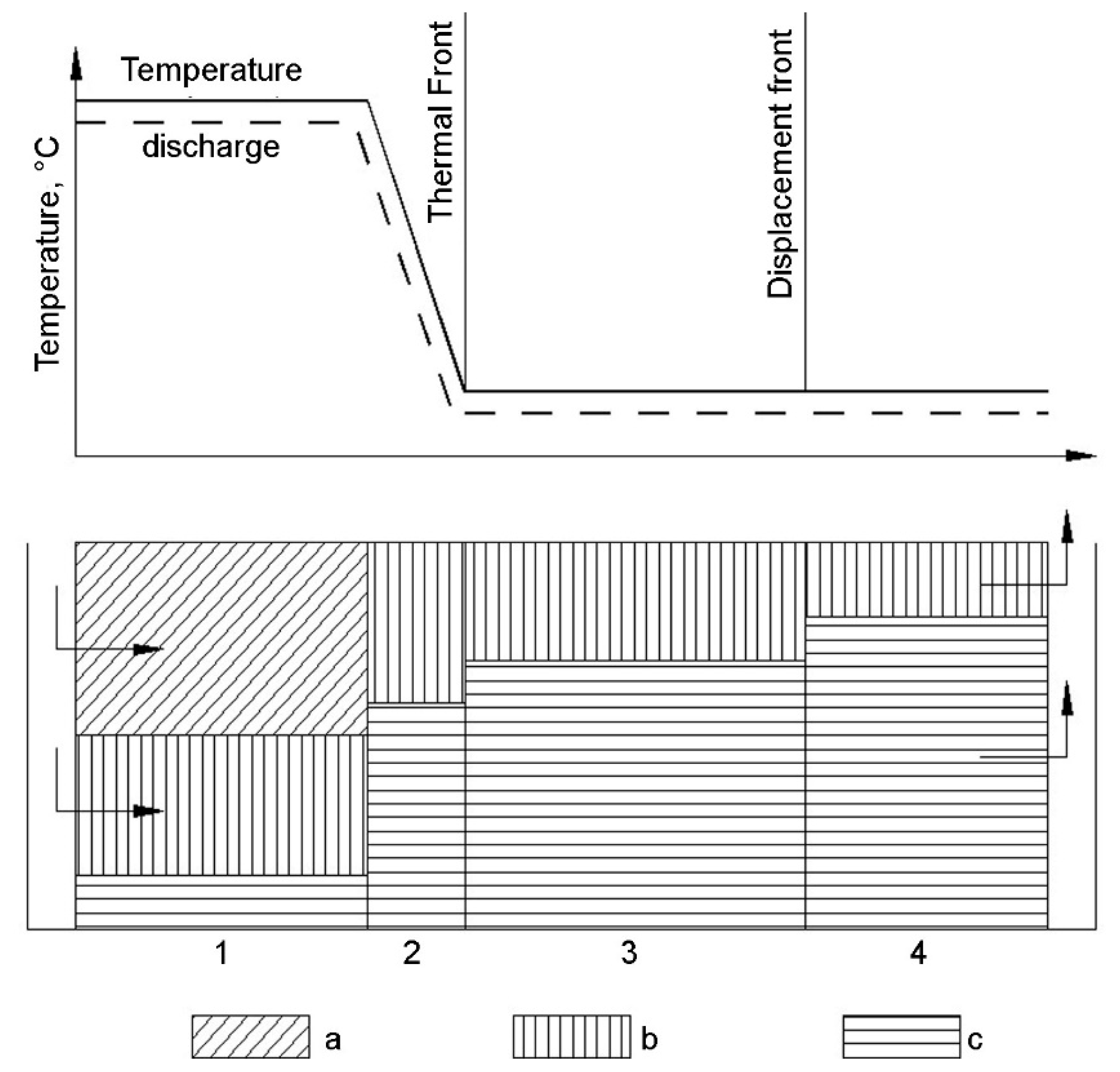
- The need to apply measures for environmental protection and disposal of combustion products;
- The need to take measures to prevent corrosion of equipment;
- The possibility of manifestation of gravitational effects and, as a result, a decrease in the coverage of the formation by thermal exposure.
7.6. The Method of Thermal Gas Exposure
8. Other Methods of Enhanced Oil Recovery
8.1. Hydraulic Fracturing (HF)
8.2. Operation of Wells with Horizontal Completion
8.3. Acoustic Methods
- Reducing the surface tension at the boundaries of the solid phase and the fluid under the influence of vibrational energy generated in the elastic field by ultrasound;
- Changing the physical and mechanical properties of high-viscosity fluids containing asphalt and resinous compounds to make them more mobile;
- Involving interlayers with low filtration properties in the development, thereby increasing the sweep coefficient in thickness. The tests carried out at the Samotlor field showed that, on average, the oil production rate increased from 3.5 to 7.8 tons/day and the productivity coefficient from 0.143 to 0.23 m3/(day atm) [31,32].
9. World Experience in Using MIP and EOR
10. Discussion
- The short duration of the effect;
- The probability of failure to achieve the planned effect of treatment;
- The High cost of chemical reagents.
11. Conclusions
- The transition from rigid methods of influence on stratum for receiving big volumes in short terms to regimes sparing the internal system of a field promotes prolongation of operation of a field and, accordingly, increase in the volume of produced oil. The application of the suggested methods of oil recovery increase will allow using fields at the final stage of development and those which can still give big flow rates for many years with maximum efficiency.
- Application of one method is not enough for more effective development of a deposit; application of a complex of methods ensures maximum oil recovery factor. It is necessary to understand that the mode of deposit changes with the time of operation of a field, as well as production conditions should change. Oil field works must mean not only the development of reserves with the aim of getting a quick income but also professional field development, research of the maximum possible quantity of hydrocarbons, preservation of the environment and the deposit’s internal system [2].
- Cooperation between the state and oil-producing companies is an integral part of a successful oil-producing complex. First, it is necessary to think about the perspective of the decisions made, about the responsibility for the conduct of development and reasonable exploitation of the field.
- Expanded the conceptual and categorical apparatus related to the predictive evaluation of the results of measures to improve oil recovery and to form a comprehensive methodological approach to the planning of these activities.
- Proposed the use of combined activities to improve oil recovery, maximizing the amount of additional oil production.
Author Contributions
Funding
Data Availability Statement
Conflicts of Interest
References
- Adams, K.; Kohlmeier, M.; Powell, M.; Zeisel, S. Nutrition in Medicine: Nutrition Education for Medical Students and Residents. Nutr. Clin. Pract. 2010, 25, 471–480. [Google Scholar] [CrossRef] [PubMed]
- Kutergina, G.; Yapparov, E. The impact of integrated modelling on the technical and economic indicators of the oil production process. IOP Conf. Ser. Mater. Sci. Eng. 2020, 873, 012024. [Google Scholar] [CrossRef]
- Adasani, A.; Bai, B. Analysis of EOR projects and updated screening criteria. J. Pet. Sci. Eng. 2011, 79, 10–24. [Google Scholar] [CrossRef]
- Podoprigora, D.; Byazrov, R.; Sytnik, J. The Comprehensive Overview of Large-Volume Surfactant Slugs Injection for Enhancing Oil Recovery: Status and the Outlook. Energies 2022, 15, 8300. [Google Scholar] [CrossRef]
- Fritzsche, S.; Billig, S.; Rynek, R.; Abburi, R.; Tarakhovskaya, E.; Leuner, O.; Frolov, A.; Birkemeyer, C. Derivatization of Methylglyoxal for LC-ESI-MS Analysis—Stability and Relative Sensitivity of Different Derivatives. Molecules 2018, 23, 2994. [Google Scholar] [CrossRef] [PubMed]
- Shchurov, N.I.; Dedov, S.I.; Malozyomov, B.V.; Shtang, A.A.; Andriashin, S.N.; Martyushev, N.V.; Klyuev, R.V. Degradation of Lithium-Ion Batteries in an Electric Transport Complex. Energies 2021, 14, 8072. [Google Scholar] [CrossRef]
- Vertakova, Y.T.; Polozhentseva, Y.; Zvyagintsev, G. Prospects for development of hydrocarbon raw materials resources reproduction. IOP Conf. Ser. Earth Environ. Sci. 2017, 87, 092031. [Google Scholar] [CrossRef]
- Martyushev, N.V.; Malozyomov, B.V.; Sorokova, S.N.; Efremenkov, E.A.; Qi, M. Mathematical Modeling the Performance of an Electric Vehicle Considering Various Driving Cycles. Mathematics 2023, 11, 2586. [Google Scholar] [CrossRef]
- Lavenburg, V.M.; Rosentrater, K.A.; Jung, S. Extraction Methods of Oils and Phytochemicals from Seeds and Their Environmental and Economic Impacts. Processes 2021, 9, 1839. [Google Scholar] [CrossRef]
- Khudaiberdiev, A.; Kosianov, P. Integrated physical enhanced recovery method for high-viscosity oil reservoirs. E3S Web Conf. 2021, 244, 09012. [Google Scholar] [CrossRef]
- Wang, M.; Yang, S.; Li, J.; Zheng, Z.; Liu, Q.; Wen, J.; Zhang, Y. Pressure-sensitive characteristics of high-pour-point live oil and quantitative analysis of composition change. J. Pet. Sci. Eng. 2020, 193, 107430. [Google Scholar] [CrossRef]
- Guodong, C.; Fulong, N.; Bin, D.; Tong, L.; Qiucheng, Z. Particle migration and formation damage during geothermal exploitation from weakly consolidated sandstone reservoirs via water and CO2 recycling. Energy 2022, 240, 122507. [Google Scholar] [CrossRef]
- Ran, X. Nonlinear Percolation Theory for Ultralow-Permeability Reservoirs, Chapter 2. In Advanced Water Injection for Low Permeability Reservoirs; Ran, X., Ed.; Gulf Professional Publishing: Houston, TX, USA, 2013; pp. 51–113. ISBN 9780123970312. [Google Scholar] [CrossRef]
- Yang, J.; Wenbo, G.; Wei, C.; Min, S. Effects of pore characteristics on water-oil two-phase displacement in non-homogeneous pore structures: A pore-scale lattice Boltzmann model considering various fluid density ratios. Int. J. Eng. Sci. 2020, 154, 103343. [Google Scholar] [CrossRef]
- Zhang, Y.P.; Hyndman, C.L.; Maini, B.B. Measurement of gas diffusivity in heavy oils. J. Pet. Sci. Eng. 2000, 25, 37–47. [Google Scholar] [CrossRef]
- Cheraghi, Y.; Kord, S.; Mashayekhizadeh, V. Application of Machine Learning Techniques for Selecting the Most Suitable Enhanced Oil Recovery Method; Challenges and Opportunities. J. Pet. Sci. Eng. 2021, 205, 108761. [Google Scholar] [CrossRef]
- Li, K.; Zhou, G.; Yang, Y.; Li, F.; Jiao, Z. A novel prediction method for favorable reservoir of oil field based on grey wolf optimizer and twin support vector machine. J. Pet. Sci. Eng. 2020, 189, 106952. [Google Scholar] [CrossRef]
- Ado, M.R.; Greaves, M.; Rigby, S.P. Effect of operating pressure on the performance of THAI-CAPRI in situ combustion and in situ catalytic process for simultaneous thermal and catalytic upgrading of heavy oils and bitumen. Pet. Res. 2022, 7, 155–164. [Google Scholar] [CrossRef]
- Ragab, A.; Mansour, E.M. Enhanced Oil Recovery: Chemical Flooding; IntechOpen: London, UK, 2021. [Google Scholar] [CrossRef]
- Zemenkova, M.; Kuzina, O.; Shabarov, A. Oil displacement by aqueous solutions of surfactants at various temperatures. IOP Conf. Ser. Mater. Sci. Eng. 2019, 663, 012003. [Google Scholar] [CrossRef]
- Ahmed, B.; Amin, S.H.; Roozbeh, R. A review of fluid displacement mechanisms in surfactant-based chemical enhanced oil recovery processes: Analyses of key influencing factors. Pet. Sci. 2022, 19, 1211–1235. [Google Scholar] [CrossRef]
- Holmberg, K.; Jonsson, B.; Kronberg, B.; Lindman, B. Surfactants and Polymers in Aqueous Solution; John Wiley & Sons, Ltd.: Hoboken, NJ, USA, 2002; ISBN 0-471-49883-1. [Google Scholar]
- Nimibofa, A.; Augustus, N.E.; Donbebe, W. Modelling and Interpretation of Adsorption Isotherms. J. Chem. 2017, 2017, 3039817. [Google Scholar] [CrossRef]
- Al-Yaari, A.; Ching, D.L.C.; Sakidin, H.; Muthuvalu, M.S.; Zafar, M.; Alyousifi, Y.; Saeed, A.A.H.; Bilad, M.R. Thermophysical Properties of Nanofluid in Two-Phase Fluid Flow through a Porous Rectangular Medium for Enhanced Oil Recovery. Nanomaterials 2022, 12, 1011. [Google Scholar] [CrossRef] [PubMed]
- Kalam, S.; Abu-Khamsin, S.; Kamal, M.S.; Patil, S. Surfactant Adsorption Isotherms: A Review. ACS Omega 2021, 6, 32342–32348. [Google Scholar] [CrossRef] [PubMed]
- Sam-Marcus, J.; Enaworu, E.; Rotimi, O.; Seteyeobot, I. A proposed solution to the determination of water saturation: Using a modelled equation. J. Pet. Explor. Prod. Technol. 2018, 8, 1009–1015. [Google Scholar] [CrossRef]
- Akhmetzianov, A.; Kushner, A.; Lychagin, V. Mass and heat transport in two-phase Buckley—Leverett’s model. J. Geom. Phys. 2016, 113, 2–9. [Google Scholar] [CrossRef]
- Korotenko, V.; Grachev, S.; Kushakova, N.; Leontiev, S.; Zaboeva, M.; Aleksandrov, M. On modeling of non-stationary two-phase filtration. IOP Conf. Ser. Earth Environ. Sci. 2018, 181, 012016. [Google Scholar] [CrossRef]
- Bjerk, T.R.; Severino, P.; Jain, S.; Marques, C.; Silva, A.M.; Pashirova, T.; Souto, E.B. Biosurfactants: Properties and Applications in Drug Delivery, Biotechnology and Ecotoxicology. Bioengineering 2021, 8, 115. [Google Scholar] [CrossRef]
- Sun, X.; Liu, J.; Dai, X.; Wang, X.; Yapanto, L.M.; Zekiy, A.O. On the application of surfactant and water alternating gas (SAG/WAG) injection to improve oil recovery in tight reservoirs. Energy Rep. 2021, 7, 2452–2459. [Google Scholar] [CrossRef]
- Zhizhin, M.; Matveev, A.; Ghosh, T.; Hsu, F.-C.; Howells, M.; Elvidge, C. Measuring Gas Flaring in Russia with Multispectral VIIRS Nightfire. Remote Sens. 2021, 13, 3078. [Google Scholar] [CrossRef]
- Palyanitsina, A.; Safiullina, E.; Byazrov, R.; Podoprigora, D.; Alekseenko, A. Environmentally Safe Technology to Increase Efficiency of High-Viscosity Oil Production for the Objects with Advanced Water Cut. Energies 2022, 15, 753. [Google Scholar] [CrossRef]
- Sayfutdinov, M.A.; Khakimzyanov, I.N.; Petrov, V.N.; Sheshdirov, R.I.; Mironova, L.M. Studies on the presence of a hydrodynamic connection between the terrigenous Bobrikovsky and carbonate Tournaisian objects based on the geological and technological model of the field area. Georesources 2018, 20, 2–8. [Google Scholar] [CrossRef]
- Salmo, I.C.; Sorbie, K.S.; Skauge, A. The Impact of Rheology on Viscous Oil Displacement by Polymers Analyzed by Pore-Scale Network Modelling. Polymers 2021, 13, 1259. [Google Scholar] [CrossRef] [PubMed]
- Zaitsev, M.V.; Mikhailov, N.N.; Tumanova, E.S. Non-linear filtration models and the effect of nonlinearity parameters on flow rates in low-permeability reservoirs. Georesursy=Georesources 2021, 23, 44–50. [Google Scholar] [CrossRef]
- Fletcher, A.; Weston, S.; Haynes, A.; Clough, M. The Successful Implementation of a Novel Polymer EOR Pilot in the Low Permeability Windalia Field. In Proceedings of the SPE Enhanced Oil Recovery Conference, Kuala Lumpur, Malaysia, 2–4 July 2013. SPE-165253-MS. [Google Scholar] [CrossRef]
- Abuhasel, K.; Kchaou, M.; Alquraish, M.; Munusamy, Y.; Jeng, Y.T. Oily Wastewater Treatment: Overview of Conventional and Modern Methods, Challenges, and Future Opportunities. Water 2021, 13, 980. [Google Scholar] [CrossRef]
- Basafa, M.; Hawboldt, K. Reservoir souring: Sulfur chemistry in offshore oil and gas reservoir fluids. J Pet. Explor. Prod Technol. 2019, 9, 1105–1118. [Google Scholar] [CrossRef]
- Liang, X.; Pengcheng, L.; Yun, Z. Development and Research Status of Heavy Oil Enhanced Oil Recovery. Geofluids 2022, 13, 5015045. [Google Scholar] [CrossRef]
- Fedorov, K.; Shevelev, A.; Gilmanov, A.; Arzhylovskiy, A.; Anuriev, D.; Vydysh, I.; Morozovskiy, N. Injection of Gelling Systems to a Layered Reservoir for Conformance Improvement. Gels 2022, 8, 621. [Google Scholar] [CrossRef]
- Rostami, A.; Kordavani, A.; Parchekhari, S.; Hemmati-Sarapardeh, A.; Helalizadeh, A. New insights into permeability determination by coupling Stoneley wave propagation and conventional petrophysical logs in carbonate oil reservoirs. Sci. Rep. 2022, 12, 11618. [Google Scholar] [CrossRef]
- Ado, M.R.; Greaves, M.; Rigby, S.P. Simulation of catalytic upgrading in CAPRI, an add-on process to novel in-situ combustion. THAI. Pet. Res. 2021, 7, 297–307. [Google Scholar] [CrossRef]
- Li, Y.; Zhou, F.; Xu, H.; Yu, G.; Yao, E.; Zhang, L.; Li, B. Comparative investigation of nanoparticles effect for enhanced oil recovery—Experimental and mechanistic study. IOP Conf. Ser. Earth Environ. Sci. 2022, 984, 12012. [Google Scholar] [CrossRef]
- Sun, L.; Li, B.; Jiang, H.; Li, Y.; Jiao, Y. An Injectivity Evaluation Model of Polymer Flooding in Offshore Multilayer Reservoir. Energies 2019, 12, 1444. [Google Scholar] [CrossRef]
- Almukhametova, E.; Veliev, E.; Puchkov, A. Development of the non-stationary waterflooding technology. IOP Conf. Ser. Mater. Sci. Eng. 2020, 952, 12038. [Google Scholar] [CrossRef]
- Akpabio, J.; Ifeanyichukwu, C.; Isehunwa, S. Improved Oil Recovery by Carbon Dioxide Flooding. Int. J. Eng. Technol. 2014, 4, 1–6. [Google Scholar]
- Goharzadeh, A.; Fatt, Y.Y. Combined effect of silica nanofluid and wettability on enhanced oil recovery process. J. Pet. Sci. Eng. 2022, 215, 110663. [Google Scholar] [CrossRef]
- Núñez-López, V.; Moskal, E. Potential of CO2-EOR for Near-Term Decarbonization. Front. Clim. 2019, 1, 5. [Google Scholar] [CrossRef]
- Alagorni, A.H.; Yaacob, Z.B.; Abdurahman, H. Nour An Overview of Oil Production Stages: Enhanced Oil Recovery Techniques and Nitrogen Injection. Int. J. Environ. Sci. Dev. 2015, 6, 693. [Google Scholar] [CrossRef]
- Morenov, V.; Leusheva, E.; Buslaev, G.; Gudmestad, O.T. System of Comprehensive Energy-Efficient Utilization of Associated Petroleum Gas with Reduced Carbon Footprint in the Field Conditions. Energies 2020, 13, 4921. [Google Scholar] [CrossRef]
- Arutyunov, V. Utilization of associated petroleum gas via small-scale power generation. Russ. J. Gen. Chem. 2012, 81, 2557–2563. [Google Scholar] [CrossRef]
- Xiang’an, L.; Hanqiao, J.; Yanli, P. A New Injectivity Prediction Model for Early Polymer Injection. Int. J. Mater. Mech. Manuf. 2015, 3, 243–248. [Google Scholar]
- Hajidavalloo, E.; Daneh-Dezfuli, A.; Falavand Jozaei, A. Effect of temperature variation on the accurate prediction of bottom-hole pressure in well drilling. In Energy Sources, Part A: Recovery, Utilization, and Environmental Effects; Taylor & Francis Group: London, UK, 2020; pp. 1–22. [Google Scholar] [CrossRef]
- Shakeel, M.; Pourafshary, P.; Hashmet, M.R. Investigation of Brine pH Effect on the Rheological and Viscoelastic Properties of HPAM Polymer for an Optimized Enhanced Oil Recovery Design. ACS Omega 2022, 7, 14961–14971. [Google Scholar] [CrossRef] [PubMed]
- Shokufe, A.; Nima, R.; Sohrab, Z. A comprehensive review on Enhanced Oil Recovery by Water Alternating Gas (WAG) injection. Fuel 2018, 227, 218–246. [Google Scholar] [CrossRef]
- Pichtel, J. Oil and Gas Production Wastewater: Soil Contamination and Pollution Prevention. Appl. Environ. Soil Sci. 2016, 2016, 2707989. [Google Scholar] [CrossRef]
- Mohammad, R.S.; Zhang, S.; Zhao, X.; Lu, S. An Experimental Study of Cyclic CO2-Injection Process in Unconventional Tight Oil Reservoirs. Oil Gas Res. 2018, 4, 150. [Google Scholar] [CrossRef]
- Al-Asadi, A.; Arce, A.; Rodil, E.; Soto, A. Enhanced oil recovery with nanofluids based on aluminum oxide and 1-dodecyl-3-methylimidazolium chloride ionic liquid. J. Mol. Liq. 2022, 363, 119798. [Google Scholar] [CrossRef]
- Zhou, Y.; Liu, T.; Sang, G.; Lu, H.; Lu, X.; Li, B. Experimental Analysis and Performance Investigation of Immiscible Super-Critical CO2 Flooding Processes in Tight Oil Reservoir. Int. J. Heat Technol. 2022, 40, 522–526. [Google Scholar] [CrossRef]
- Hu, X.; Li, M.; Peng, C.; Davarpanah, A. Hybrid Thermal-Chemical Enhanced Oil Recovery Methods; An Experimental Study for Tight Reservoirs. Symmetry 2020, 12, 947. [Google Scholar] [CrossRef]
- Mokheimer, E.; Hamdy, M.; Abubakar, Z.; Shakeel, R.; Habib, M.A.; Mahmoud, M. A Comprehensive Review of Thermal Enhanced Oil Recovery: Techniques Evaluation. J. Energy Resour. Technol. Trans. ASME 2019, 141, 030801. [Google Scholar] [CrossRef]
- Küçük, F.S.; Küçük, K.; Temizel, C. Chapter One—Importance and emergence of advanced materials in energy industry. Adv. Mater. Sens. Oil Gas Ind. Sustain. Mater. Oil Gas Appl. Gulf Prof. Publ. 2021, 1, 1–25. [Google Scholar] [CrossRef]
- Sorokin, A.S.; Bolotov, A.V.; Nuriev, D.R.; Derevyanko, V.K.; Minkhanov, I.F.; Varfolomeev, M.A. Dynamic Criteria for Physical Modeling of Oil Displacement by Gas Injection. Processes 2022, 10, 2620. [Google Scholar] [CrossRef]
- Fay, J. Physical Processes in the Spread of Oil on a Water Surface. Int. Oil Spill Conf. Proc. 1971, 1971, 463–467. [Google Scholar] [CrossRef]
- Guzei, D.; Zhigarev, V.; Rudyak, V.; Ivanova, S.; Minakov, A. Effect of Initial Water Saturation on Oil Displacement Efficiency by Nanosuspensions. Fluids 2022, 7, 59. [Google Scholar] [CrossRef]
- Malozyomov, B.V.; Martyushev, N.V.; Sorokova, S.N.; Efremenkov, E.A.; Qi, M. Mathematical Modeling of Mechanical Forces and Power Balance in Electromechanical Energy Converter. Mathematics 2023, 11, 2394. [Google Scholar] [CrossRef]
- Dietrich, J. The Displacement of Heavy Oil from Diatomite Using Hot Water and Steam. In Proceedings of the SPE Improved Oil Recovery Symposium, Tulsa, OK, USA, 24–28 April 2010. [Google Scholar] [CrossRef]
- Wu, Z.; Liu, H. Investigation of hot-water flooding after steam injection to improve oil recovery in thin heavy-oil reservoir. J. Petrol. Explor. Prod. Technol. 2019, 9, 1547–1554. [Google Scholar] [CrossRef]
- Mukhambetzhanov, S.T.; Mussina, A.A.; Aman, K.P. Construction and study of a model of oil displacement by water from the reservoir. Math. Model. Eng. Probl. 2023, 10, 463–468. [Google Scholar] [CrossRef]
- Grigoriev, R.S.; Scharf, I.V.; Scharf, K.A. Problems of using gas methods for enhanced oil recovery at the Vankor field. Bulletin of Tomsk Polytechnic University. Georesource Eng. 2022, 333, 90–98. [Google Scholar] [CrossRef]
- Dong, X.; Liu, H.; Chen, Z.; Wu, K.; Lu, N.; Zhang, Q. Enhanced oil recovery techniques for heavy oil and oilsands reservoirs after steam injection. Appl. Energy 2019, 239, 1190–1211. [Google Scholar] [CrossRef]
- Isametova, M.E.; Nussipali, R.; Martyushev, N.V.; Malozyomov, B.V.; Efremenkov, E.A.; Isametov, A. Mathematical Modeling of the Reliability of Polymer Composite Materials. Mathematics 2022, 10, 3978. [Google Scholar] [CrossRef]
- Nurgalieva, K.S.; Saychenko, L.A.; Riazi, M. Improving the Efficiency of Oil and Gas Wells Complicated by the Formation of Asphalt–Resin–Paraffin Deposits. Energies 2021, 14, 6673. [Google Scholar] [CrossRef]
- Poddubny, Y.A.; Poddubny, A.Y. Methods to increase oil return in the world: Today and possible tomorrow. Drill. Oil 2020, 12, 43–49. [Google Scholar]
- Guo, H.; Wang, Z.; Wang, B.; Zhang, Y.; Meng, H.; Sui, H. Molecular dynamics simulations of oil recovery from dolomite slit nanopores enhanced by CO2 and N2 injection. Adv. Geo-Energy Res. 2022, 6, 306–313. [Google Scholar] [CrossRef]
- Wojnicki, M.; Luba’s, J.; Gawro’nski, M.; Szufleta, S.; Ku’snierczyk, J.; Warnecki, M. Reservoir and Prediction of the Recovery Factor Using Genetic Programming. Energies 2022, 15, 2127. [Google Scholar] [CrossRef]
- Ganiyeva, A.; Karabayanova, L.; Pourafshary, P.; Hashmet, M.R. The Performance of Engineered Water Flooding to Enhance High Viscous Oil Recovery. Appl. Sci. 2022, 12, 3893. [Google Scholar] [CrossRef]
- Zoveidavianpoor, M.; Samsuri, A.; Reza, S. Well Stimulation in Carbonate Reservoirs: The Needs and Superiority of Hydraulic Fracturing. Energy Sources Part A Recovery Util. Environ. Eff. 2013, 35, 92–98. [Google Scholar] [CrossRef]
- Izadi, N.; Nasernejad, B. Newly engineered alumina quantum dot-based nanofluid in enhanced oil recovery at reservoir conditions. Sci. Rep. 2022, 12, 9505. [Google Scholar] [CrossRef] [PubMed]
- Hazarika, K.; Gogoi, S.B.; Kumar, A. Polymer flooding and its effects on enhanced oil recovery special reference to upper Assam Basin. Pet. Res. 2022, 8, 54–62. [Google Scholar] [CrossRef]
- Meng, X.; Hang, S.; Zhang, H.; Gao, F.; Gao, Y.; Li, X. Study of Water Huff-n-Puff in Low-Permeability Oil Reservoirs with Horizontal Fractures: A Case Study of Chang 6 Reservoir in Yanchang, China. Front. Earth Sci. 2022, 9, 824410. [Google Scholar] [CrossRef]
- Li, S.; Wang, Z.; Han, R.; Wang, L.; Hu, Z. Experimental Study on the Cyclic Steam Stimulation Assisted by Flue Gas under Shallow Heavy-Oil Reservoir Conditions: Optimization of the Steam-Flue Gas Ratio. Front. Energy Res. 2020, 8, 599370. [Google Scholar] [CrossRef]
- Sarmah, S.; Gogoi, S.B.; Jagatheesan, K.; Hazarika, K. Formulation of a combined low saline water and polymer flooding for enhanced oil recovery. Int. J. Ambient. Energy 2022, 43, 1089–1097. [Google Scholar] [CrossRef]
- Zhao, Y. Laboratory experiment and field application of high pressure and high quality steam flooding. J. Petrol. Sci. Eng. 2020, 189, 107016. [Google Scholar] [CrossRef]
- Zhang, H.; Liu, Y.; Ta, Y.; Zou, F. Physical simulation experiment of flue gas-assisted SAGD in super heavy oil reservoir. Fault-Block Oil Gas Field 2020, 27, 244–247. [Google Scholar]
- Fazlyeva, R.; Ursenbach, M.; Mallory, D.; Mehta, S.; Cheremisin, A.; Moore, G.; Spasennykh, M. In Situ Combustion of Heavy Oil within a Vuggy Carbonate Reservoir: Part I—Feasibility Study. Energies 2023, 16, 2233. [Google Scholar] [CrossRef]
- Xiong, C.; Wei, F.; Zhang, S.; Cai, C.; Lv, J.; Shao, L.; Wang, D. Experimental Investigation of a Mechanically Stable and Temperature/Salinity Tolerant Biopolymer toward Enhanced Oil Recovery Application in Harsh Condition Reservoirs. Energies 2022, 15, 1601. [Google Scholar] [CrossRef]
- Alarifi, S.A.; Mustafa, A.; Omarov, K.; Baig, A.R.; Tariq, Z.; Mahmoud, M. Carbonate Precipitation Applicability in the Oil and Gas Industry. Front. Bioeng. Biotechnol. 2022, 10, 900881. [Google Scholar] [CrossRef] [PubMed]
- Solanki, P.; Baldania, D.; Jogani, D.; Chaudhary, B.; Shah, M.; Kshirsagar, A. Artificial intelligence: New age of transformation in petroleum upstream. Pet. Res. 2022, 7, 106–114. [Google Scholar] [CrossRef]
- Ratnakar, R.R.; Dindoruk, B. The Role of Diffusivity in Oil and Gas Industries: Fundamentals, Measurement, and Correlative Techniques. Processes 2022, 10, 1194. [Google Scholar] [CrossRef]
- Yahya, Z.N.M.; Puspaseruni, N.P.; Kurnia, R.; Wahyuningrum, D.; Mulyani, I.; Wijayanto, T.; Kurihara, M.; Waskito, S.S.; Aslam, B.M.; Marhaendrajana, T. The effect of aluminosilicate in anionic–nonionic surfactant mixture on wetness and interfacial tension in its application for enhanced oil recovery. Energy Rep. 2022, 8, 1013–1025. [Google Scholar] [CrossRef]
- Storey, B.M.; Worden, R.H.; McNamara, D.D. The Geoscience of In-Situ Combustion and High-Pressure Air Injection. Geosciences 2022, 12, 340. [Google Scholar] [CrossRef]
- Nikolova, C.; Gutierrez, T. Use of Microorganisms in the Recovery of Oil from Recalcitrant Oil Reservoirs: Current State of Knowledge, Technological Advances and Future Perspectives. Front. Microbiol. 2020, 10, 2996. [Google Scholar] [CrossRef]
- Burger, J.G. Chemical Aspects of In-Situ Combustion—Heat of Combustion and Kinetics. Soc. Pet. Eng. J. 2013, 12, 410–422. [Google Scholar] [CrossRef]
- Zheng, R.; Liao, G.; You, H.; Song, X.; Song, Q.; Yao, Q. Montmorillonite-catalyzed thermal conversion of low-asphaltene heavy oil and its main components. J. Pet. Sci. Eng. 2020, 187, 106743. [Google Scholar] [CrossRef]
- Deniz-Paker, M.; Cinar, M. Investigation of the combustion characteristics of Bati Raman oil with sand. J. Pet. Sci. Eng. 2017, 157, 793–805. [Google Scholar] [CrossRef]
- Huang, X.; Wang, Y.; Long, Y.; Liu, J.; Zheng, H.; Nie, W.; Han, H. Characteristics of Core-Shell Polymeric Nanoparticles Dispersion System in Porous Media. Polymers 2022, 14, 1803. [Google Scholar] [CrossRef] [PubMed]
- Hu, B.; Gu, Z.; Zhou, C.; Wang, L.; Huang, C.; Su, J. Investigation of the Effect of Capillary Barrier on Water—Oil Movement in Water Flooding. Appl. Sci. 2022, 12, 6285. [Google Scholar] [CrossRef]
- Hayatolgheibi, S.H.; Ameli, F.; Moghbeli, M.R. A simulation study on hydrogel performance for enhanced oil recovery using phase-field method. Sci. Rep. 2022, 12, 2379. [Google Scholar] [CrossRef] [PubMed]
- Sakthivel, S.; Zhou, X.; Giannelis, E.P.; Kanj, M.Y. Carbon nanodots for enhanced oil recovery in carbonate reservoirs. Energy Rep. 2021, 7, 8943–8959. [Google Scholar] [CrossRef]
- Bashir, A.; Sharifi Haddad, A.; Rafati, R. Nanoparticle/polymer-enhanced alpha olefin sulfonate solution for foam generation in the presence of oil phase at high temperature conditions. Colloid. Surf. Physicochem. Eng. Aspect. 2019, 582, 123875. [Google Scholar] [CrossRef]
- Wu, Y.; Zhang, J.; Dong, S.; Li, Y.; Slany, M.; Chen, G. Use of Betaine-Based Gel and Its Potential Application in Enhanced Oil Recovery. Gels 2022, 8, 351. [Google Scholar] [CrossRef]
- Wei, B.; Tian, Q.T.; Mao, R.X.; Xue, Y.; Wen, Y.B.; Pu, W.F. Application and prospect of nano-cellulose materials in oil and gas field development. Pet. Geol. Recovery Effic. 2020, 27, 98–104. [Google Scholar] [CrossRef]
- Ismail, N.B.; Hascakir, B. Impact of asphaltenes and clay interaction on in-situ combustion performance. Fuel 2020, 268, 117358. [Google Scholar] [CrossRef]
- Berna, H.; Ross, C.M.; Castanier, L.M.; Kovscek, A.R. Fuel formation and conversion during in-situ combustion of crude oil. SPE J. 2013, 18, 1217–1228. [Google Scholar] [CrossRef]
- Bassir, S.M.; Behbahani, H.S.; Shahbazi, K.; Kord, S.; Mirzaei-Paiaman, A. Towards prediction of oil recovery by spontaneous imbibition of modified salinity brine into limestone rocks: A scaling study. J. Pet. Explor. Prod. Technol. 2022, 13, 79–99. [Google Scholar] [CrossRef]
- Sun, Z.; Wang, X. Theoretical Research in Laboratory and Field Trial of Micro-Nano-Oil Displacement System Conformance Control Technology. Geosci. World Lithosphere 2022, 8325652. [Google Scholar] [CrossRef]
- Wang, C.; Ma, B.; Zhang, L. Experimental study on CO2 capture by using n-butylamine to plug the gas channeling to enhanced oil recovery. J. Pet. Explor. Prod. Technol. 2022, 12, 2523–2531. [Google Scholar] [CrossRef]
- Adepehin, E.J.; Bankole, O.M.; Arifin, M.H. Poro-perm evolution in Oligo-Miocene coastal sandstones: Constraining the relative influence of sedimentary facies, mineralogy, and diagenesis on analogue reservoir quality of the Nyalau Formation, Borneo. Mar. Pet. Geol. 2022, 139, 105589. [Google Scholar] [CrossRef]
- Ado, M.R. A detailed approach to up-scaling of the Toe-to-Heel Air Injection (THAI) In-Situ Combustion enhanced heavy oil recovery process. J. Pet. Sci. Eng. 2020, 187, 106740. [Google Scholar] [CrossRef]
- Sowunmi, A.O.; Efeovbokhan, V.E.; Orodu, O.D.; Oni, B.A. Polyelectrolyte-nanocomposite for enhanced oil recovery: Influence of nanoparticle on rheology, oil recovery and damage formation. J. Pet. Explor. Prod. Technol. 2022, 12, 493–506. [Google Scholar] [CrossRef]
- Zhang, L.; Xiong, Y.; Zhao, Y.; Tang, H.; Guo, J.; Jia, C.; Lei, Q.; Wang, B. A reservoir drying method for enhancing recovery of tight gas. Pet. Explor. Dev. 2022, 49, 144–155. [Google Scholar] [CrossRef]
- Takbiri-Borujenia, A.; Kazemib, M.; Liuc, S.; Zhongd, Z. Molecular Simulation of Enhanced Oil Recovery in Shale. Energy Procedia 2019, 158, 6067–6072. [Google Scholar] [CrossRef]
- Mercado, D.; Trevisan, O.V. Pseudokinetic model for field-scale simulation of in-situ combustion. Soc. Pet. Eng. Reserv. Eval. Eng. 2016, 20, 161–167. [Google Scholar] [CrossRef]
- Ariskina, K.A.; Yuan, C.; Abaas, M.; Emelianov, D.A.; Rodionov, N.; Varfolomeev, M.A. Catalytic effect of clay rocks as natural catalysts on the combustion of heavy oil. Appl. Clay Sci. 2020, 193, 105662. [Google Scholar] [CrossRef]
- Wei, J.; Li, J.; Zhang, X.; Wang, Z.; Shi, J.; Huang, Z. Experimental investigation for the dynamic adsorption behaviors of gel system with long slim sandpack: Implications for enhancing oil recovery. Energy Rep. 2022, 8, 9270–9278. [Google Scholar] [CrossRef]
- Qiao, S.; Liu, Q.; Zhang, X.; Che, H. Polymer and Its Performance on Enhanced Oil Recovery. Front. Chem. 2021, 9, 738717. [Google Scholar] [CrossRef] [PubMed]
- Erfando, T.; Siregar, G.; Alli, Y.F.; Wangge, Y.B.D. Hydrolyzed Polyacrylamide Screening for EOR in an Indonesian Mature Oil Field. Trends Sci. 2022, 19, 3461. [Google Scholar] [CrossRef]
- Cao, G.; Cheng, Q.; Liu, Y.; Bu, R.; Zhang, N.; Wang, P. Influencing Factors of Surfactant Stripping Crude Oil and Spontaneous Imbibition Mechanism of Surfactants in a Tight Reservoir. ACS Omega 2022, 7, 19010–19020. [Google Scholar] [CrossRef] [PubMed]
- Mukhametdinova, A.; Mikhailova, P.; Kozlova, E.; Karamov, T.; Baluev, A.; Cheremisin, A. Effect of Thermal Exposure on Oil Shale Saturation and Reservoir Properties. Appl. Sci. 2020, 10, 9065. [Google Scholar] [CrossRef]
- Isah, A.; Arif, M.; Hassan, A.; Mahmoud, M.; Iglauer, S. Fluid–rock interactions and it’s implications on EOR: Critical analysis, experimental techniques and knowledge gaps. Energy Rep. 2022, 8, 6355–6395. [Google Scholar] [CrossRef]
- Simpson, G.A.; Fishman, N.S. Unconventional Tight Oil Reservoirs: A Call for New Standardized Core Analysis Workflows and Research. In Proceedings of the International Symposium of the Society of Core Analysts, St. John’s, NL, Canada, 16–21 August 2015. [Google Scholar]
- Gharibi, A.; Zoveidavianpoor, M. Hydraulic Fracturing for Improved Oil Recovery. J. Adv. Res. Fluid Mech. Therm. Sci. 2015, 9, 1–18. [Google Scholar]
- Zoveidavianpoor, M.; Samsuri, A.; Shadizadeh, S. The Clean Up of Asphaltene Deposits in Oil Wells. Energy Sources Part A Recovery Util. Environ. Eff. 2013, 35, 22–31. [Google Scholar] [CrossRef]
- Liu, Y.; Zhang, C.; Wen, Q.; Li, Z.; Song, M. Heat-Resistant CO2 Foam for Promoting Carbon Capture and Enhanced Oil Recovery. Front. Energy Res. 2022, 10, 883214. [Google Scholar] [CrossRef]
- Du, X.; Cheng, L.; Cao, R.; Zhou, J. Application of 3D Embedded Discrete Fracture Model for Simulating CO2-EOR and Geological Storage in Fractured Reservoirs. Appl. Sci. 2022, 13, 229. [Google Scholar] [CrossRef]
- Terracina, J.; Turner, J.; Collins, D.; Spillars, S. Proppant Selection and Its Effect on the Results of Fracturing Treatments Performed in Shale Formations. In Proceedings of the SPE Annual Technical Conference and Exhibition, Florence, Italy, 19–22 September 2010; Volume 6. [Google Scholar] [CrossRef]
- Al-Shatty, W.; Campana, M.; Alexander, S.; Barron, A.R. Interaction of Surface-Modified Alumina Nanoparticles and Surfactants at an Oil/Water Interface: A Neutron Reflectometry, Scattering, and Enhanced Oil Recovery Study. ACS Appl. Mater. Interfaces 2022, 14, 19505–19514. [Google Scholar] [CrossRef]
- Giraldo, L.J.; Galeano-Caro, D.; Franco, C.A.; Archila, J.; Villamil, F.; Cortes, F.B.; Franco, C.A. Development of a Novel Green Bio-Nanofluid from Sapindus Saponaria for Enhanced Oil Recovery Processes. Processes 2022, 10, 1057. [Google Scholar] [CrossRef]
- Chen, J.; Al-Wadei, M.H.; Kennedy, R.C.M.; Terry, P.D. Hydraulic Fracturing: Paving the Way for a Sustainable Future? J. Environ. Public Health 2014, 2014, 656824. [Google Scholar] [CrossRef]
- Wang, J.; Wang, T.; Xu, H.; Jiang, H. Graded regulation technology for enhanced oil recovery and water shutoff in pore-cavity-fracture carbonate reservoirs. Arab. J. Chem. 2022, 15, 103907. [Google Scholar] [CrossRef]
- Wu, J.; Mu, L.; Ren, D.; Liu, J.; Hui, H.; Wang, Z. Experimental Study of Imbibition Within Core Chips of Shale in Ordos Basin. Front. Phys. 2022, 10, 833497. [Google Scholar] [CrossRef]
- Speight, J.G. Chapter 7—Thermal methods of recovery. In Enhanced Recovery Methods for Heavy Oil and Tar Sands; Gulf Publishing Company: Houston, TX, USA, 2009; pp. 221–260. ISBN 9781933762258. [Google Scholar] [CrossRef]
- Zhang, Z.; Yang, J.; Chen, S.; Ou, Q.; Zhang, Y.; Qu, X.; Guo, Y. Numerical Simulation of Pulsed Gravel Packing Completion in Horizontal Wells. Energies 2021, 14, 292. [Google Scholar] [CrossRef]
- Tangparitkul, S.; Charpentier, T.V.J.; Pradilla, D.; Harbottle, D. Interfacial and Colloidal Forces Governing Oil Droplet Displacement: Implications for Enhanced Oil Recovery. Colloids Interfaces 2018, 2, 30. [Google Scholar] [CrossRef]
- Ojo, K.P.; Osisanya, S.O.; Ayeni, K. Factors Affecting Horizontal Well Gravel Pack Efficiency. J. Can. Pet. Technol. 2008, 47, 50–54. [Google Scholar] [CrossRef] [PubMed]
- Rongtao, L.; Liao, X.; Wang, X.; Zhang, Y.; Mu, L.; Dong, P.; Tang, K. A multi-agent deep reinforcement learning method for CO2 flooding rates optimization. Energy Explor. Exploit. 2022, 41, 1–22. [Google Scholar] [CrossRef]
- Li, Z.; Bao, Z.; Chen, L.; Zhao, H.; Jiang, Z.; Wu, H.; Zhao, W. Optimization of EOR Displacement Methods Based on Multiple Factor Analysis. Geofluids 2022, 2022, 1–10. [Google Scholar] [CrossRef]
- Zijlstra, E.; Wunnik, J.; Doren, J.F.M.; Bimani, A.; Wilson, O.; Shidhani, S. Accurate Tool for IOR/EOR Screening and Estimating Target Recovery Factors. Driving Integrated and Innovative EOR. In Proceedings of the Society of Petroleum Engineers—SPE EOR Conference at Oil and Gas West Asia, Muscat, Oman, 26–28 March 2018. [Google Scholar] [CrossRef]
- Hiremath, N.; Kumar, V.; Motahari, N.; Shukla, D. An Overview of Acoustic Impedance Measurement Techniques and Future Prospects. Metrology 2021, 1, 17–38. [Google Scholar] [CrossRef]
- Scott, A.J.; Romero-Zerón, L.; Penlidis, A. Evaluation of Polymeric Materials for Chemical Enhanced Oil Recovery. Processes 2020, 8, 361. [Google Scholar] [CrossRef]
- Pillay, J.; Masuku, J.; Rajballi, M.; Mohammadi, A. An Introduction to Acoustic Enhanced Oil Recovery; ResearchGat: Berlin, Germany, 2014. [Google Scholar] [CrossRef]
- Beresnev, A.; Johnson, P. Elastic-wave stimulation of oil production: A review of methods and results. Geophysics 1994, 59, 1000–1017. [Google Scholar] [CrossRef]
- Shatalova, N.V. Innovations and renovations of enhanced oil recovery by acoustic fields. Oil Gas Stud. 2018, 2, 65–70. [Google Scholar] [CrossRef]
- Mason, T.J.; Cobley, A.J.; Graves, J.E.; Morgan, D. New evidence for the inverse dependence of mechanical and chemical effects on the frequency of ultrasound. Ultrason. Sonochem. 2011, 18, 226–230. [Google Scholar] [CrossRef] [PubMed]
- Alisheva, Z.N. About a method of acoustic impact on high viscosity oil fields. IOP Conf. Ser. Mater. Sci. Eng. 2019, 700, 012060. [Google Scholar] [CrossRef]
- Amrouche, F.; Xu, D.; Short, M.; Iglauer, S.; Vinogradov, J.; Blunt, M.J. Experimental study of electrical heating to enhance oil production from oil-wet carbonate reservoirs. Fuel 2022, 324, 124559. [Google Scholar] [CrossRef]
- Abramov, V.O. Acoustic and sonochemical methods for altering the viscosity of oil during recovery and pipeline transportation. Ultrason. Sonochem. 2016, 35, 389–396. [Google Scholar] [CrossRef]
- Abbas, A.H.; Alsaheb, R.A.A.; Abdullah, J.K. Comparative study of natural chemical for enhanced oil recovery: Focus on extraction and adsorption at quartz sand surface. Petroleum 2022, 9, 83–93. [Google Scholar] [CrossRef]
- Warwick, P.D.; Attanasi, E.D.; Blondes, M.S.; Brennan, S.T.; Buursink, M.L.; Cahan, S.M.; Doolan, C.; Freeman, P.A.; Karacan, C.; Lohr, C.D.; et al. National Assessment of Carbon Dioxide Enhanced Oil Recovery and Associated Carbon Dioxide Retention Resources—Results. In Circular; US Geological Survey: Reston, VA, USA, 2022; p. 1489. [Google Scholar]
- Liu, Q.; Liang, B.; Liu, J.; Sun, W.; Lei, Y. Imbibition oil recovery of single fracture-controlled matrix unit: Model construction and numerical simulations. Capillarity 2022, 5, 32–40. [Google Scholar] [CrossRef]
- Al-Yaari, A.; Sakidin, H.; Zainuddin, N.; Hashim, I. Unsteady Nanofluid Flow Over Exponentially Stretching Sheet with Vertical Throughflow. In Proceedings of the 6th International Conference on Fundamental and Applied Sciences; Springer Proceedings in Complexity; Springer: Singapore, 2021; pp. 595–609. [Google Scholar] [CrossRef]
- Haq, B.; Aziz, M.A.; Al Shehri, D.; Muhammed, N.S.; Basha, S.I.; Hakeem, A.S.; Qasem, M.A.A.; Lardhi, M.; Iglauer, S. Date-Leaf Carbon Particles for Green Enhanced Oil Recovery. Nanomaterials 2022, 12, 1245. [Google Scholar] [CrossRef]
- Gao, S.; Hou, C.; Zhao, L. On the economics of CO2 contracts in the enhanced oil recovery industry. J. Appl. Econ. 2022, 25, 802–818. [Google Scholar] [CrossRef]
- Song, X.; Guo, Y.; Zhang, J.; Li, X.; Zhou, J.; Xue, Z. Fracturing with Carbon Dioxide: From Microscopic Mechanism to Reservoir Application. Joule 2019, 3, 1913–1926. [Google Scholar] [CrossRef]
- Ghannam, M.T.; Selim, M.Y.E.; Zekri, A.Y.; Esmail, N. Viscoelastic Behavior of Crude Oil-Gum Emulsions in Enhanced Oil Recovery. Polymers 2022, 14, 1004. [Google Scholar] [CrossRef] [PubMed]
- Gbadamosi, A.; Patil, S.; Kamal, M.S.; Adewunmi, A.A.; Yusuff, A.S.; Agi, A.; Oseh, J. Application of Polymers for Chemical Enhanced Oil Recovery: A Review. Polymers 2022, 14, 1433. [Google Scholar] [CrossRef]
- Gong, Y.; Li, L.; Huang, W.; Zou, J.; Zhong, X.; Wang, L.; Kang, D.; Zhang, K.; Zhang, Z. A study of alkali-silica nanoparticle-polymer (ANP) flooding for enhancing heavy oil recovery. J. Petrol. Sci. Eng. 2022, 213, 110465. [Google Scholar] [CrossRef]
- Huang, H.; Lin, J.; Wang, W.; Li, S. Biopolymers Produced by Sphingomonas Strains and Their Potential Applications in Petroleum Production. Polymers 2022, 14, 1920. [Google Scholar] [CrossRef]
- Hassan, A.M.; Al-Shalabi, E.W.; Ayoub, M.A. Updated Perceptions on Polymer-Based Enhanced Oil Recovery towards High-Temperature High-Salinity Tolerance for Successful Field Applications in Carbonate Reservoirs. Polymers 2022, 14, 2001. [Google Scholar] [CrossRef]
- Ashraf, T.; Alfryyan, N.; Nasr, M.; Ahmed, S.A.; Shaban, M. Removal of Scale-Forming Ions and Oil Traces from Oil Field Produced Water Using Graphene Oxide/Polyethersulfone and TiO2 Nanoribbons/Polyethersulfone Nanofiltration Membranes. Polymers 2022, 14, 2572. [Google Scholar] [CrossRef]
- Pan, J.; Meng, Y.; Sun, N.; Liu, C.; Yang, S.; Xu, J.; Wu, W.; Li, R.; Chen, Z. Review of Marginal Oil Resources in Highly Depleted Reservoirs. Processes 2022, 10, 245. [Google Scholar] [CrossRef]
- Biktasheva, L.; Gordeev, A.; Selivanovskaya, S.; Galitskaya, P. Di- and Mono-Rhamnolipids Produced by the Pseudomonas putida PP021 Isolate Significantly Enhance the Degree of Recovery of Heavy Oil from the Romashkino Oil Field (Tatarstan, Russia). Processes 2022, 10, 779. [Google Scholar] [CrossRef]
- Giraldo, L.J.; Giraldo, M.A.; Llanos, S.; Maya, G.; Zabala, R.D.; Nassar, N.N.; Franco, C.A.; Alvarado, V.; Cortés, F.B. The effects of SiO2 nanoparticles on the thermal stability and rheological behavior of hydrolyzed polyacrylamide based polymeric solutions. J. Pet. Sci. Eng. 2017, 159, 841–852. [Google Scholar] [CrossRef]
- Dalei, N.N.; Joshi, J. Potential matching of carbon capture storage and utilization (CCSU) as enhanced oil recovery in perspective to Indian oil refineries. Clean Technol. Environ. Policy 2022, 24, 2701–2717. [Google Scholar] [CrossRef] [PubMed]
- Oraby, M. A non-Archie water saturation method for conventional reservoirs based on generalization of Passey TOC model for unconventional reservoirs. J. Pet. Explor. Prod. Technol. 2020, 10, 3295–3308. [Google Scholar] [CrossRef]
- Ado, M.R. Improving heavy oil production rates in THAI process using wells configured in a staggered line drive (SLD) instead of in a direct line drive (DLD) configuration: Detailed simulation investigations. J. Pet. Explor. Prod. Technol. 2021, 11, 4117–4130. [Google Scholar] [CrossRef]
- Snosy, M.F.; El Ela, M.A.; Elbanbi, A.; Sayyouh, H. Comprehensive investigation of low salinity waterflooding in carbonate reservoirs. J. Pet. Explor. Prod. Technol. 2022, 12, 701–724. [Google Scholar] [CrossRef]
- Gbadamosi, A.; Yusuff, A.; Agi, A.; Muruga, P.; Junin, R.; Jeffrey, O. Mechanistic study of nanoparticles-assisted xanthan gum polymer flooding for enhanced oil recovery: A comparative study. J. Pet. Explor. Prod. Technol. 2022, 12, 207–213. [Google Scholar] [CrossRef]
- Nowrouzi, I.; Mohammadi, A.H.; Manshad, A.K. Preliminary evaluation of a natural surfactant extracted from Myrtus communis plant for enhancing oil recovery from carbonate oil reservoirs. J. Pet. Explor. Prod. Technol. 2022, 12, 783–792. [Google Scholar] [CrossRef]
- Ado, M.R. Use of two vertical injectors in place of a horizontal injector to improve the efficiency and stability of THAI in situ combustion process for producing heavy oils. J. Pet. Explor. Prod. Technol. 2022, 12, 421–435. [Google Scholar] [CrossRef]
- Wu, B.; Xiu, J.; Yu, L.; Huang, L.; Yi, L.; Ma, Y. Biosurfactant production by Bacillus subtilis SL and its potential for enhanced oil recovery in low permeability reservoirs. Sci. Rep. 2022, 12, 7785. [Google Scholar] [CrossRef]
- Martyushev, N.V.; Malozyomov, B.V.; Sorokova, S.N.; Efremenkov, E.A.; Qi, M. Mathematical Modeling of the State of the Battery of Cargo Electric Vehicles. Mathematics 2023, 11, 536. [Google Scholar] [CrossRef]
- Bila, A.; Torsæter, O. Enhancing Oil Recovery with Hydrophilic Polymer-Coated Silica Nanoparticles. Energies 2020, 13, 5720. [Google Scholar] [CrossRef]
- Rostami, A.; Baghban, A.; Mohammadi, A.H.; Hemmati-Sarapardeh, A.; Habibzadeh, S. Rigorous prognostication of permeability of heterogeneous carbonate oil reservoirs: Smart modeling and correlation development. Fuel 2019, 236, 110–123. [Google Scholar] [CrossRef]
- Ikpeka, P.M.; Ugwu, J.O.; Pillai, G.G.; Russell, P. Effectiveness of electrokinetic-enhanced oil recovery (EK-EOR): A systematic review. J. Eng. Appl. Sci. 2022, 69, 60. [Google Scholar] [CrossRef]
- Shageev, A.; Ganeeva, Y.; Lukyanov, O.; Erokhin, A.; Ziganshina, M. In situ formed carboxylic acids effect on light hydrocarbons oxidation in a carbonate reservoir. IOP Conf. Ser. Earth Environ. Sci. 2020, 516, 012036. [Google Scholar] [CrossRef]
- Lin, L.; Zizhao, W.; Jiawei, L.; Jia, C.; Xiao, J.; Caili, D. Synthesis and Performance Evaluation of Polyhydroxy Benzene Sulfonate Oil Displacement Agent Based on Enhanced Interfacial Wettability Control. Acta Chim. Sin. 2022, 80, 63–68. [Google Scholar] [CrossRef]
- Tang, Y.M.; Wong, W.Y.; Tan, K.T.; Wong, L.P. Enhanced oil recovery from palm oil mill effluent using ultrasonication technique. IOP Conf. Ser. Earth Environ. Sci. 2021, 945, 012042. [Google Scholar] [CrossRef]
- Dugstad, Ø.; Viig, S.; Krognes, B.; Kleven, R.; Huseby, O. Tracer monitoring of enhanced oil recovery projects. EPJ Web Conf. 2013, 50, 02002. [Google Scholar] [CrossRef]
- Talebian, S.H.; Masoudi, R.; Tan, I.; Zitha, P. Foam assisted CO2-EOR; Concepts, Challenges and Applications, 2013. In Proceedings of the SPE Enhanced Oil Recovery Conference, Kuala Lumpur, Malaysia, 2–4 July 2013. [Google Scholar] [CrossRef]
- Yelemessov, K.; Sabirova, L.B.; Martyushev, N.V.; Malozyomov, B.V.; Bakhmagambetova, G.B.; Atanova, O.V. Modeling and Model Verification of the Stress-Strain State of Reinforced Polymer Concrete. Materials 2023, 16, 3494. [Google Scholar] [CrossRef]
- Gutarevich, V.O.; Martyushev, N.V.; Klyuev, R.V.; Kukartsev, V.A.; Kukartsev, V.V.; Iushkova, L.V.; Korpacheva, L.N. Reducing Oscillations in Suspension of Mine Monorail Track. Appl. Sci. 2023, 13, 4671. [Google Scholar] [CrossRef]
- Malozyomov, B.V.; Golik, V.I.; Brigida, V.; Kukartsev, V.V.; Tynchenko, Y.A.; Boyko, A.A.; Tynchenko, S.V. Substantiation of Drilling Parameters for Undermined Drainage Boreholes for Increasing Methane Production from Unconventional Coal-Gas Collectors. Energies 2023, 16, 4276. [Google Scholar] [CrossRef]
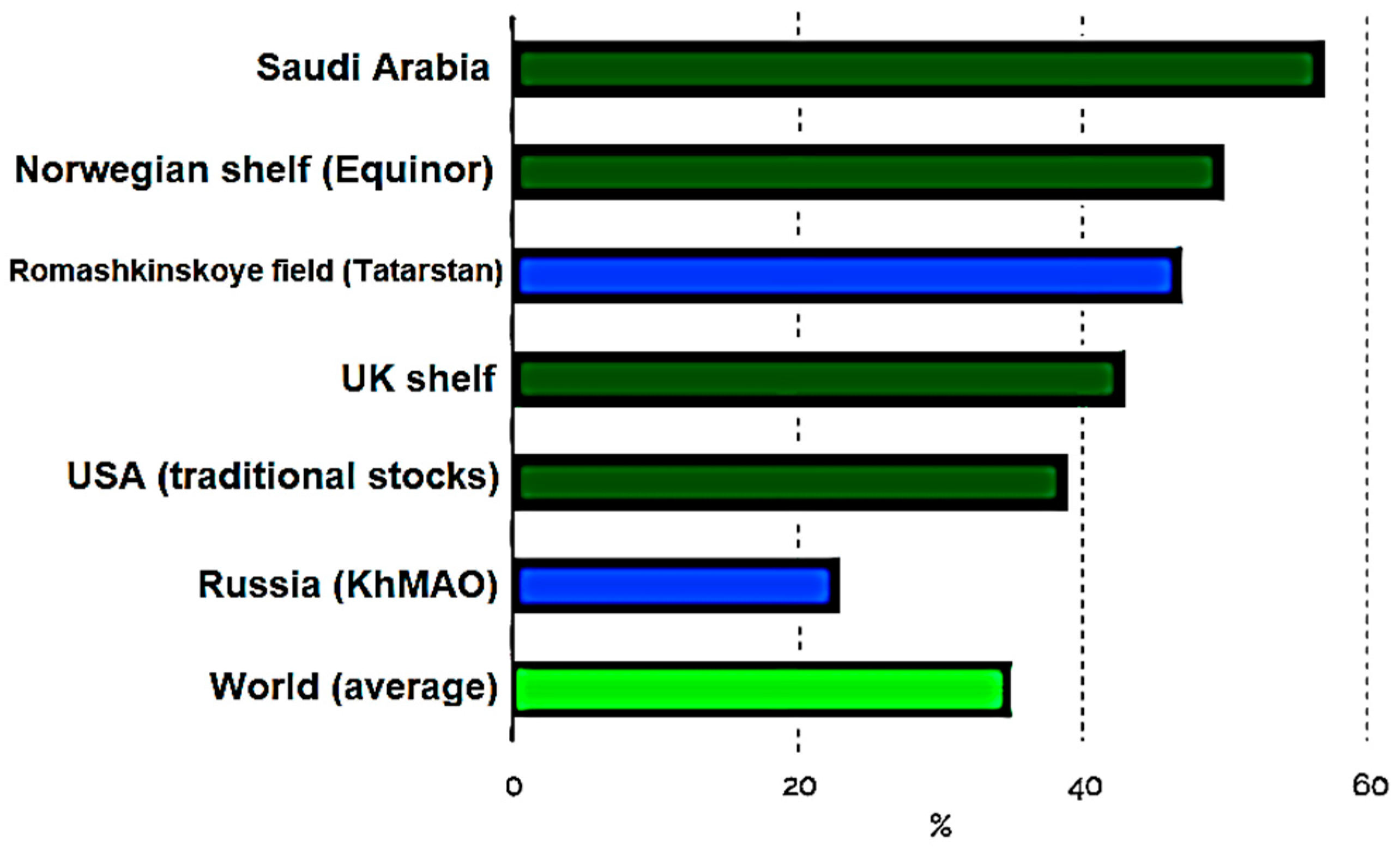

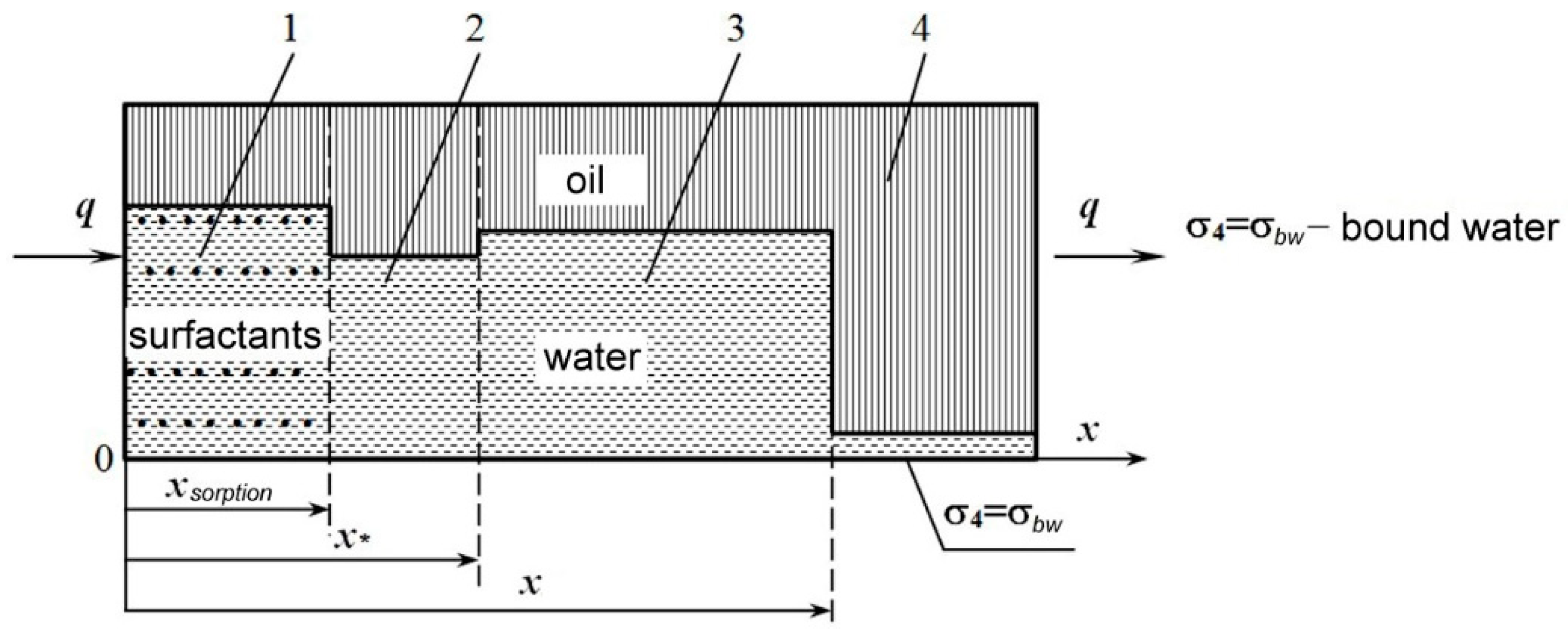

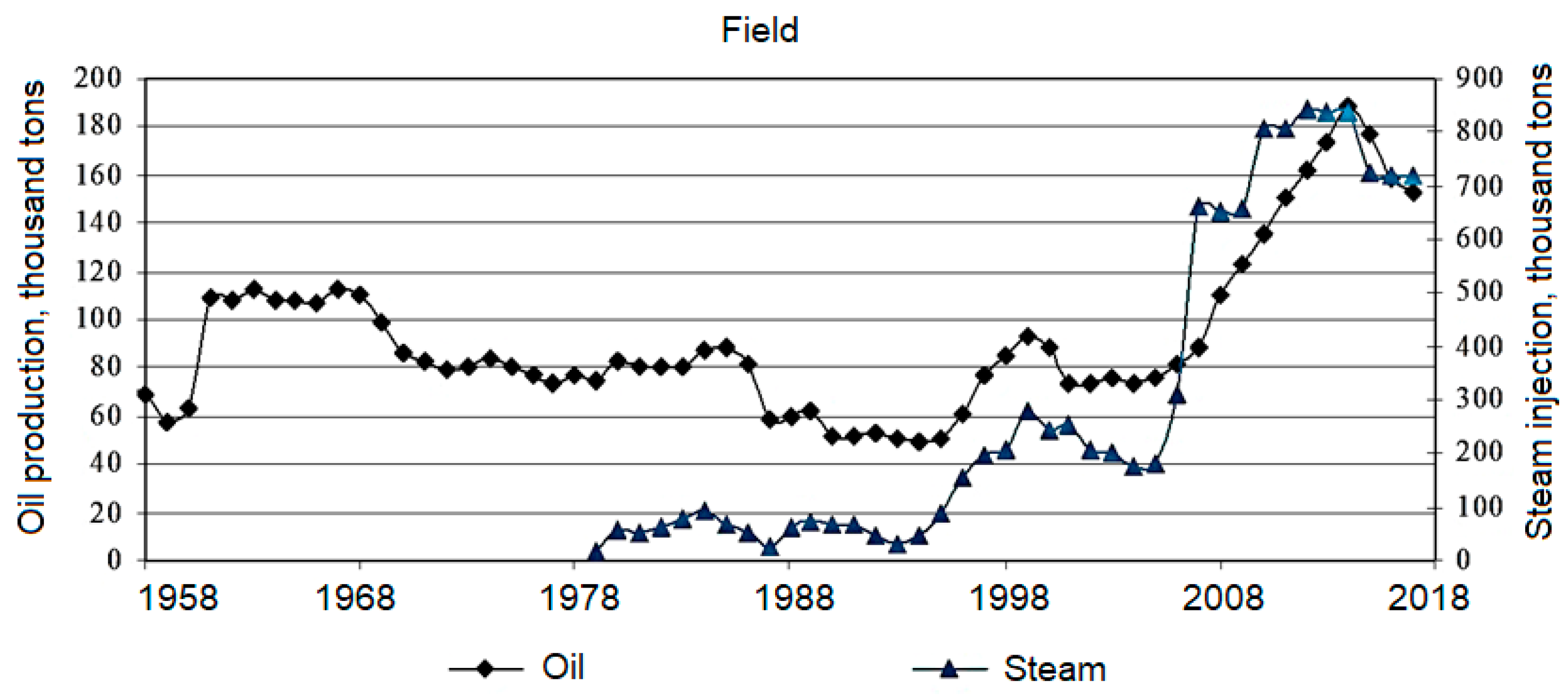
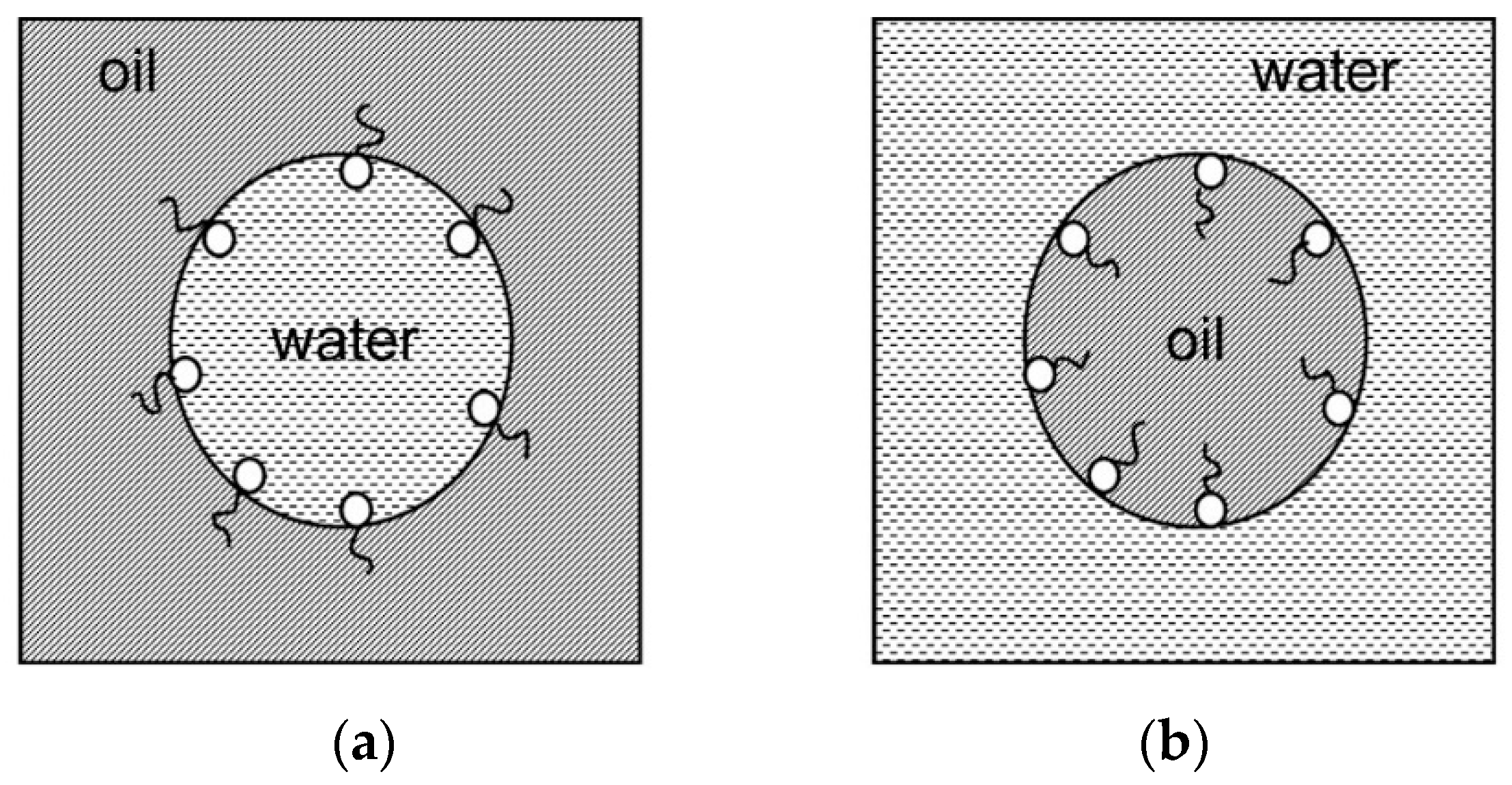
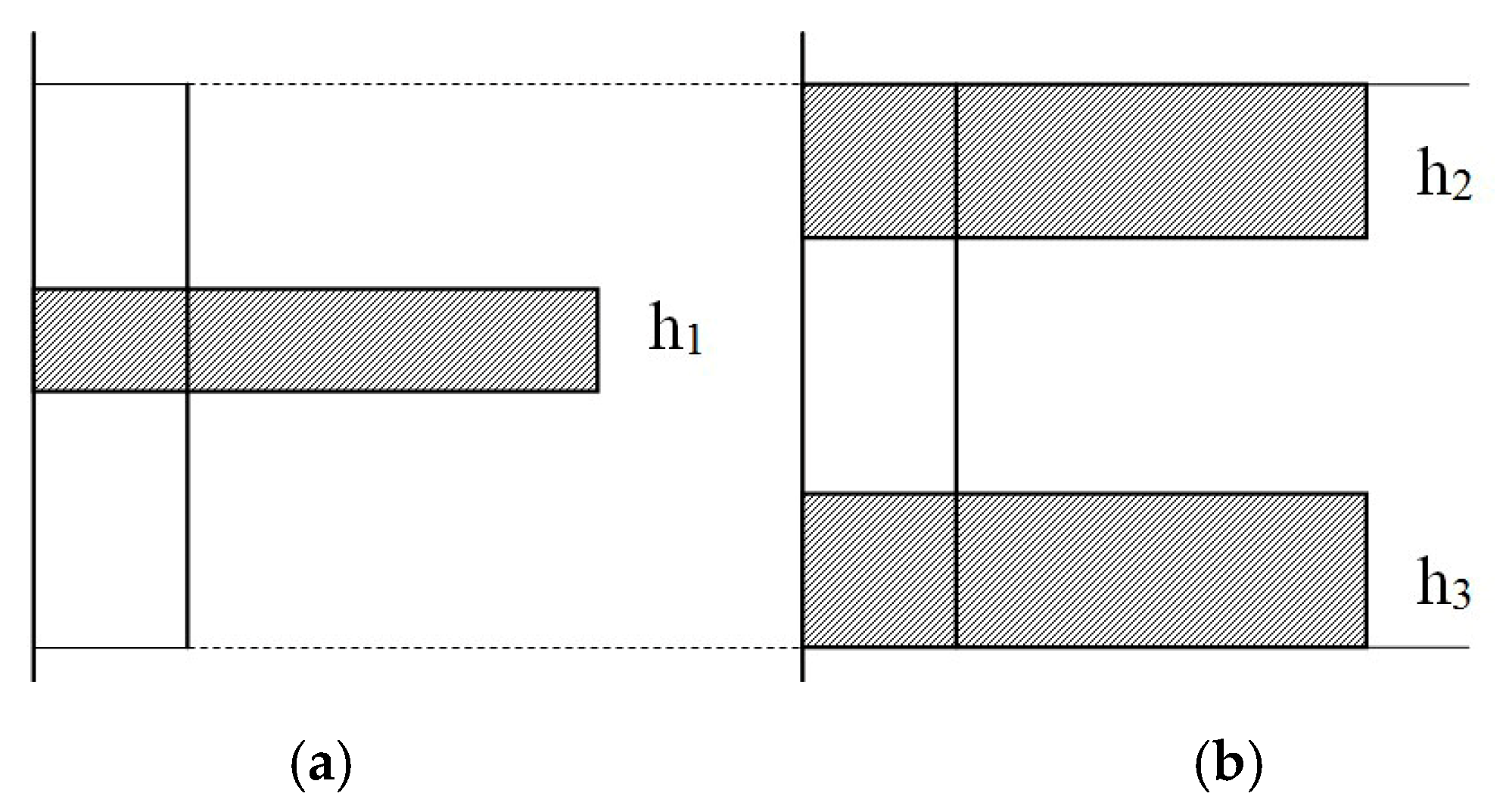
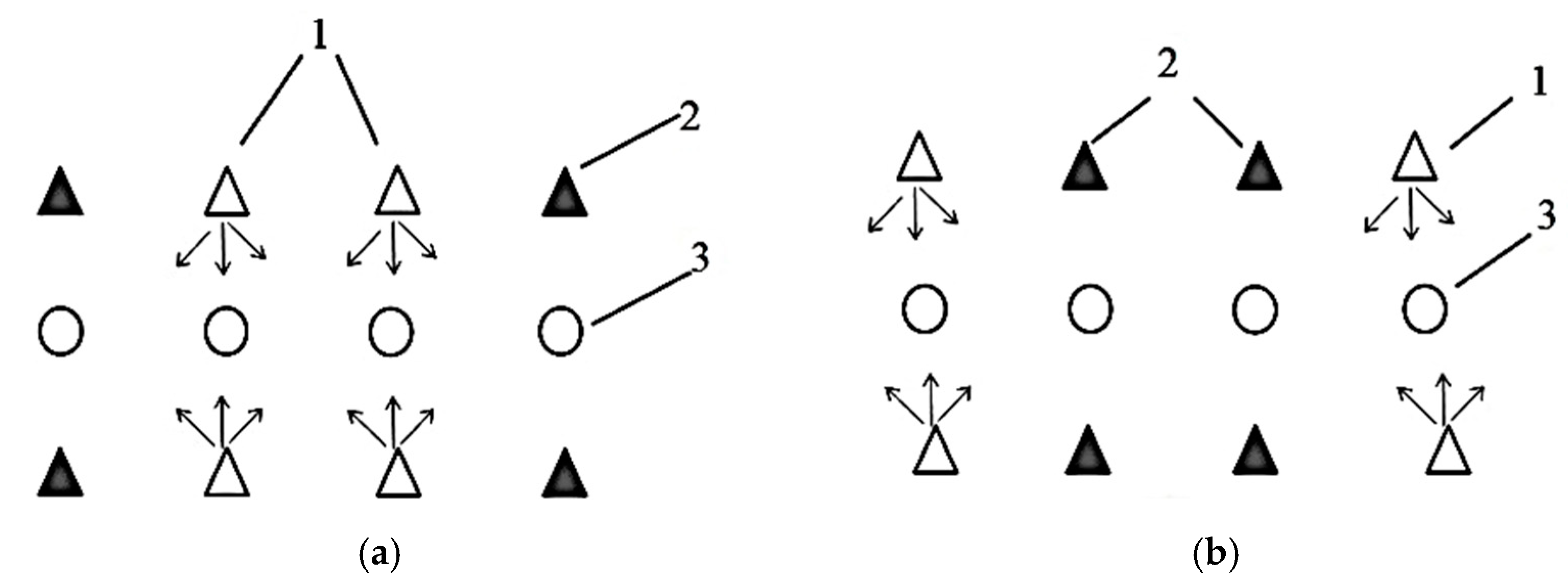
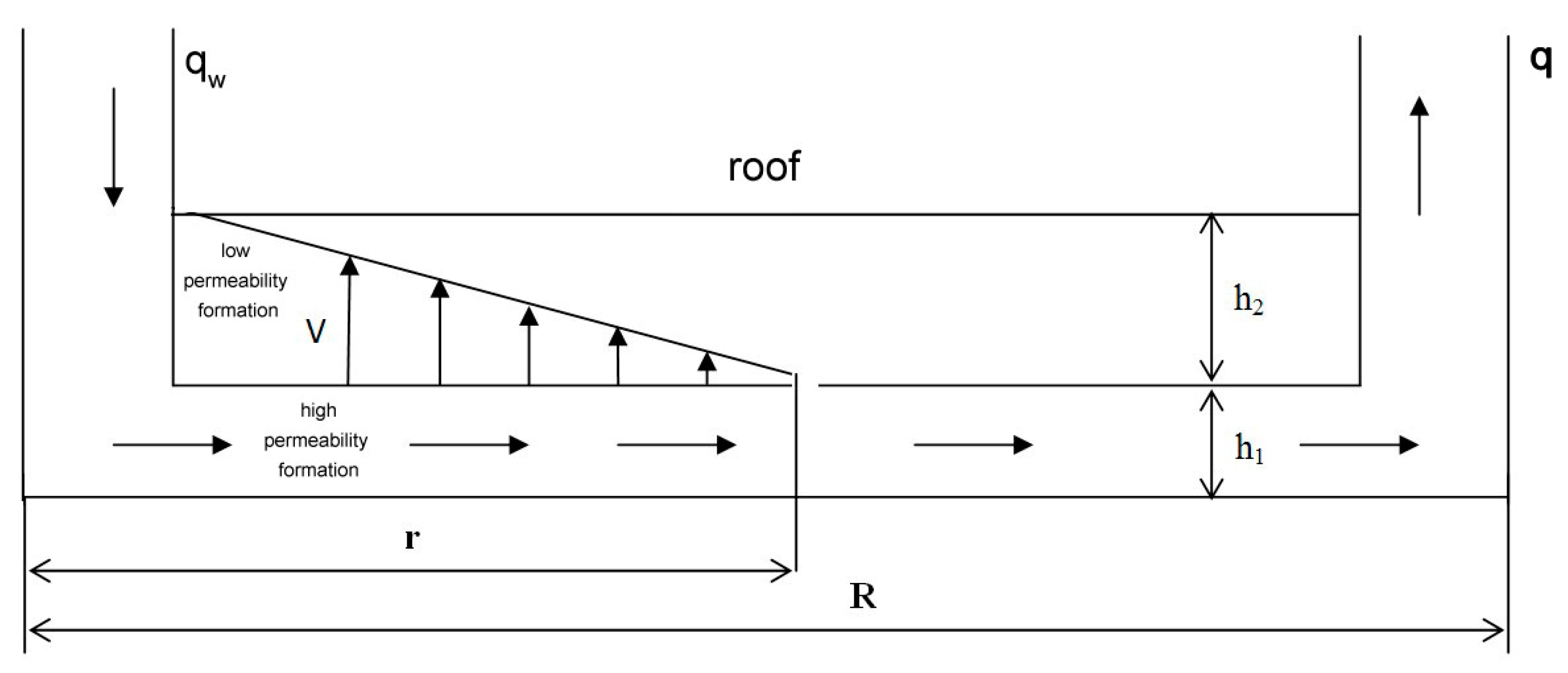
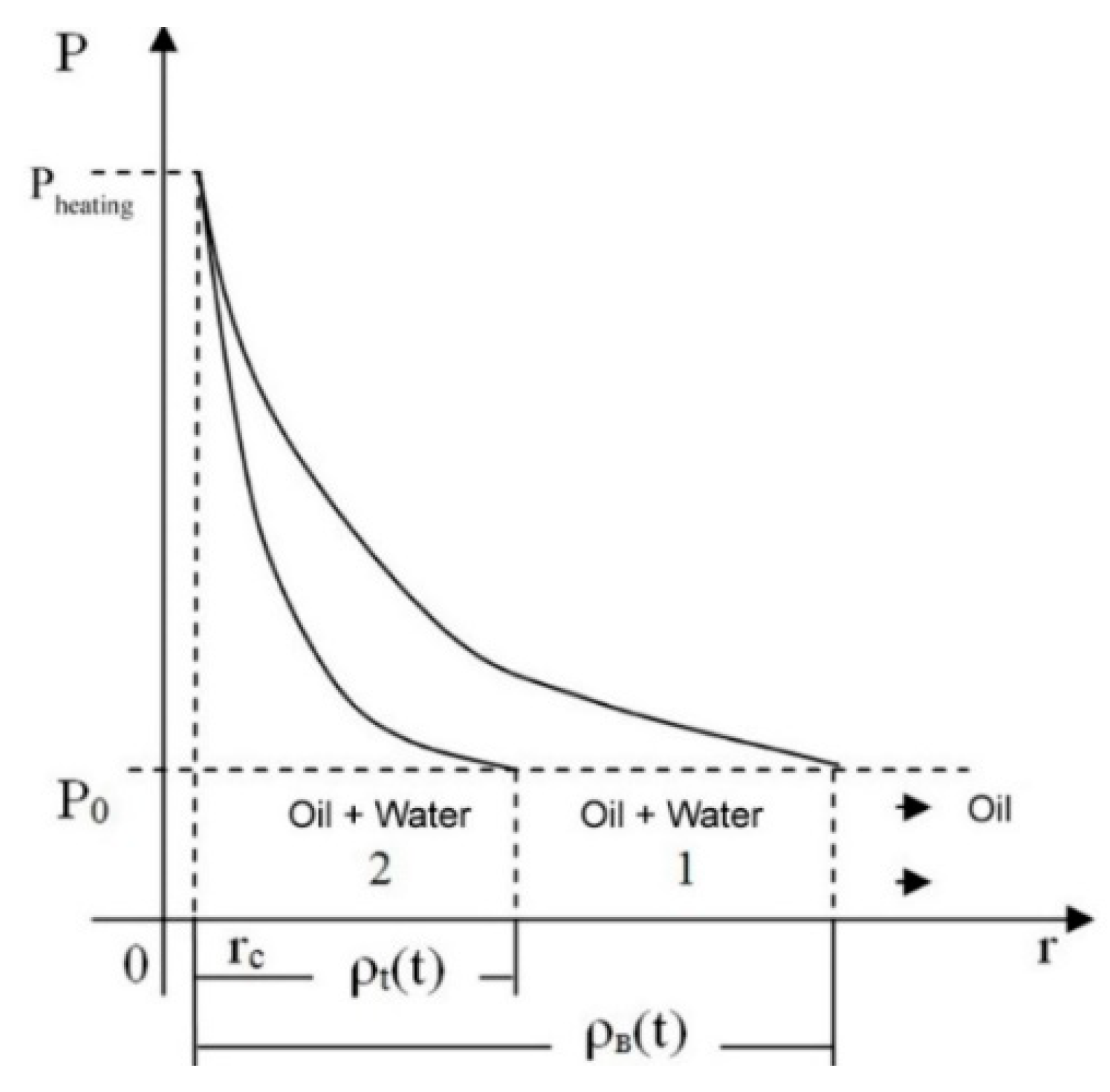
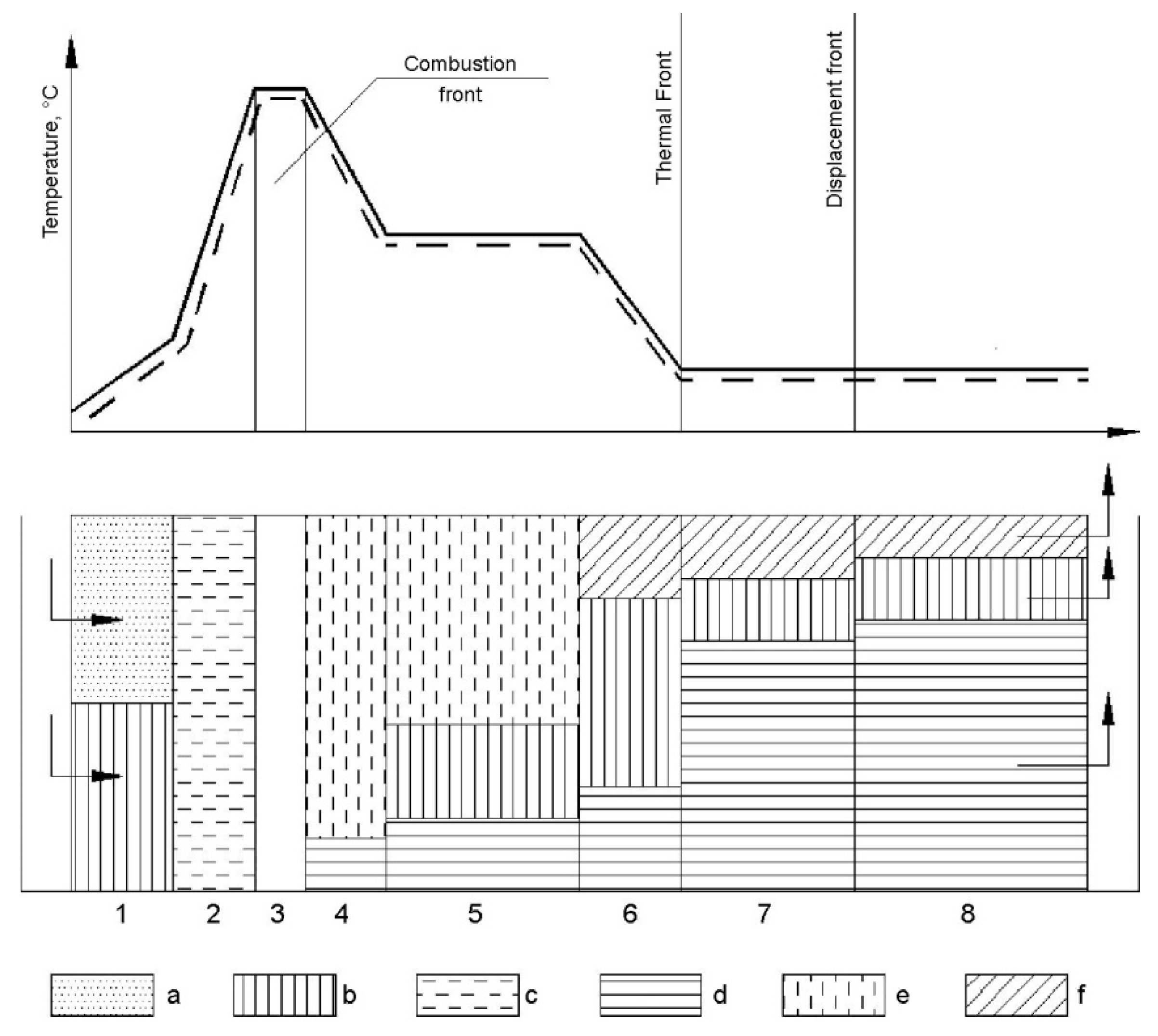
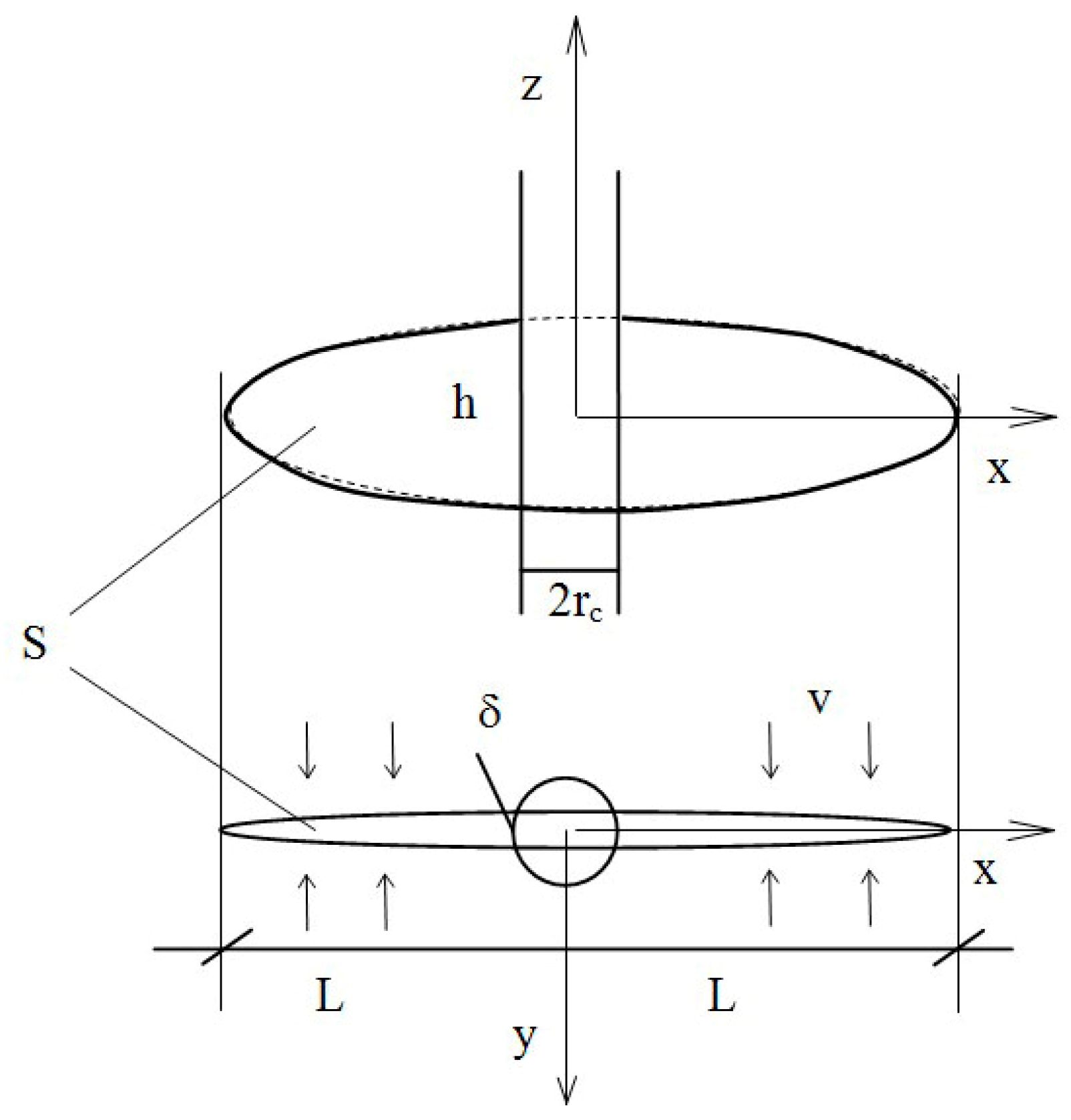

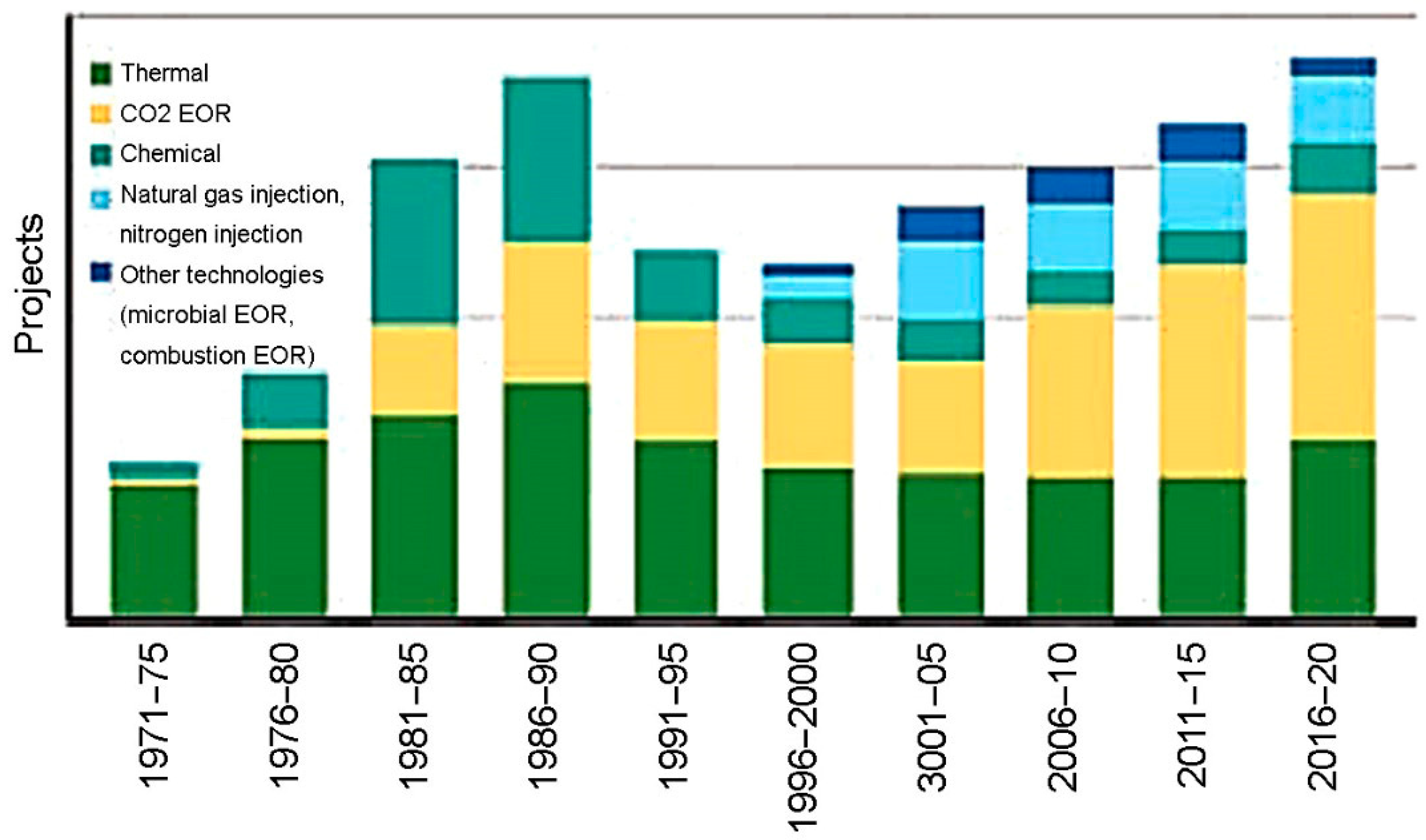
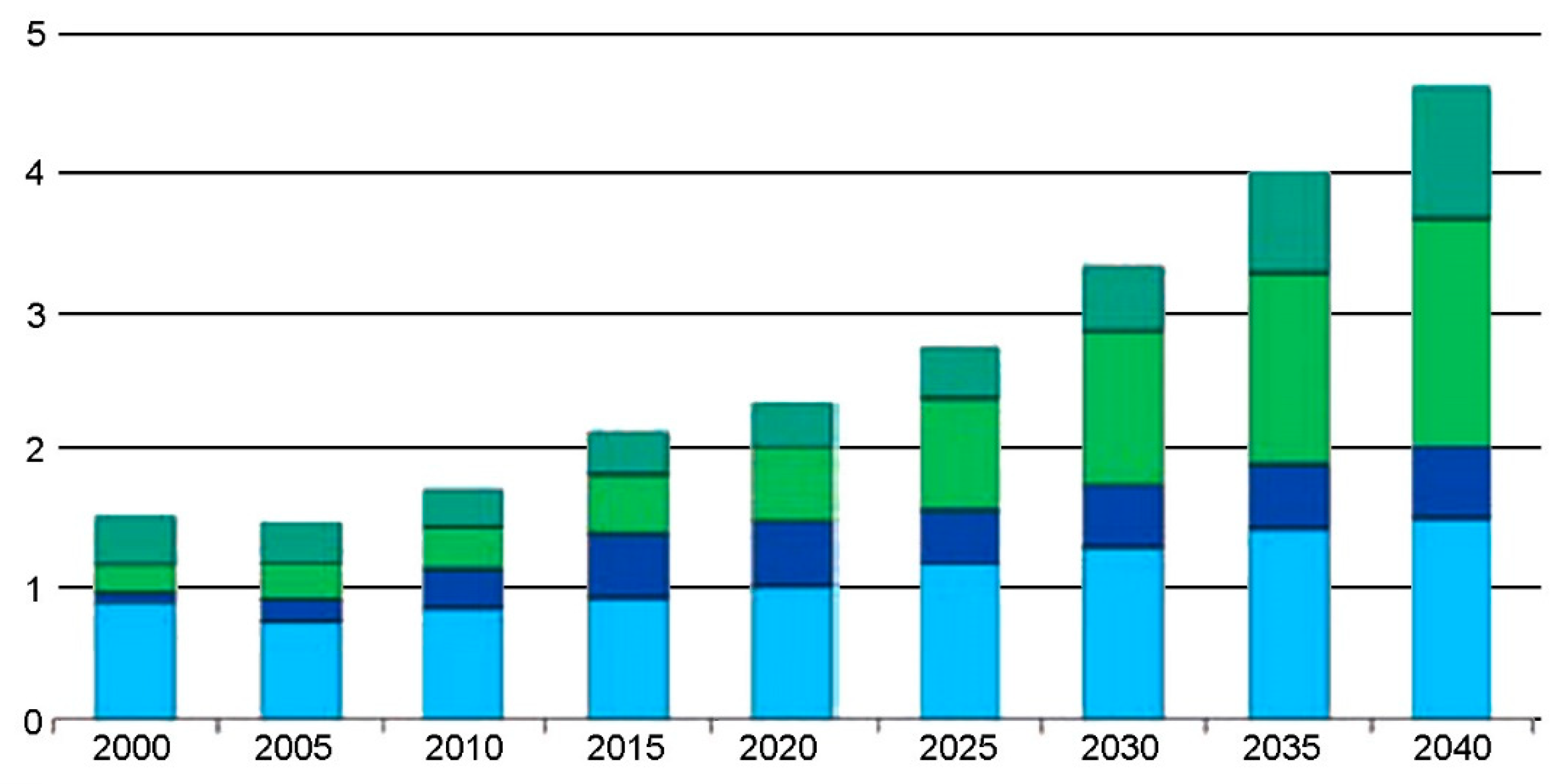
| Years | 1984 | 1994–2000 | 2006–2010 | 2014–2018 |
|---|---|---|---|---|
| Annual production according to EOR estimate, mln t, of which: | 56.1 | 93–103 | 101–94 | 94–88 |
| Thermal EOR | 35.4 | 51–60 | 40–52 | 36–49 |
| Gas EOR | 18.7 | 25–33 | 25–33 | 27–32 |
| Chemical and other EOR | 2 | 2.4–4 | 11–12 | 14–17 |
Disclaimer/Publisher’s Note: The statements, opinions and data contained in all publications are solely those of the individual author(s) and contributor(s) and not of MDPI and/or the editor(s). MDPI and/or the editor(s) disclaim responsibility for any injury to people or property resulting from any ideas, methods, instructions or products referred to in the content. |
© 2023 by the authors. Licensee MDPI, Basel, Switzerland. This article is an open access article distributed under the terms and conditions of the Creative Commons Attribution (CC BY) license (https://creativecommons.org/licenses/by/4.0/).
Share and Cite
Malozyomov, B.V.; Martyushev, N.V.; Kukartsev, V.V.; Tynchenko, V.S.; Bukhtoyarov, V.V.; Wu, X.; Tyncheko, Y.A.; Kukartsev, V.A. Overview of Methods for Enhanced Oil Recovery from Conventional and Unconventional Reservoirs. Energies 2023, 16, 4907. https://doi.org/10.3390/en16134907
Malozyomov BV, Martyushev NV, Kukartsev VV, Tynchenko VS, Bukhtoyarov VV, Wu X, Tyncheko YA, Kukartsev VA. Overview of Methods for Enhanced Oil Recovery from Conventional and Unconventional Reservoirs. Energies. 2023; 16(13):4907. https://doi.org/10.3390/en16134907
Chicago/Turabian StyleMalozyomov, Boris V., Nikita V. Martyushev, Vladislav V. Kukartsev, Vadim S. Tynchenko, Vladimir V. Bukhtoyarov, Xiaogang Wu, Yadviga A. Tyncheko, and Viktor A. Kukartsev. 2023. "Overview of Methods for Enhanced Oil Recovery from Conventional and Unconventional Reservoirs" Energies 16, no. 13: 4907. https://doi.org/10.3390/en16134907
APA StyleMalozyomov, B. V., Martyushev, N. V., Kukartsev, V. V., Tynchenko, V. S., Bukhtoyarov, V. V., Wu, X., Tyncheko, Y. A., & Kukartsev, V. A. (2023). Overview of Methods for Enhanced Oil Recovery from Conventional and Unconventional Reservoirs. Energies, 16(13), 4907. https://doi.org/10.3390/en16134907













